Why we can't help but fall in love with Hungarian culture
Travel Hungary
If you’re looking for an affordable European destination packed with rich history, fascinating landmarks and delicious holes in the wall to satisfy your appetite, Hungary is it. While some European destinations are best reserved for a splurge, it’s refreshingly easy to travel Hungary on a budget.
Budapest is popular with many travel bloggers for its relaxing thermal baths, exciting culture, stunning medieval monuments and museums, but there’s also much to explore outside the capital. You’ll also have no trouble getting around the country using public transportation – similar to other European countries, Hungary has a robust transportation network.
We’ve got some tips on where to find inexpensive accommodations, food and things to do during your trip.
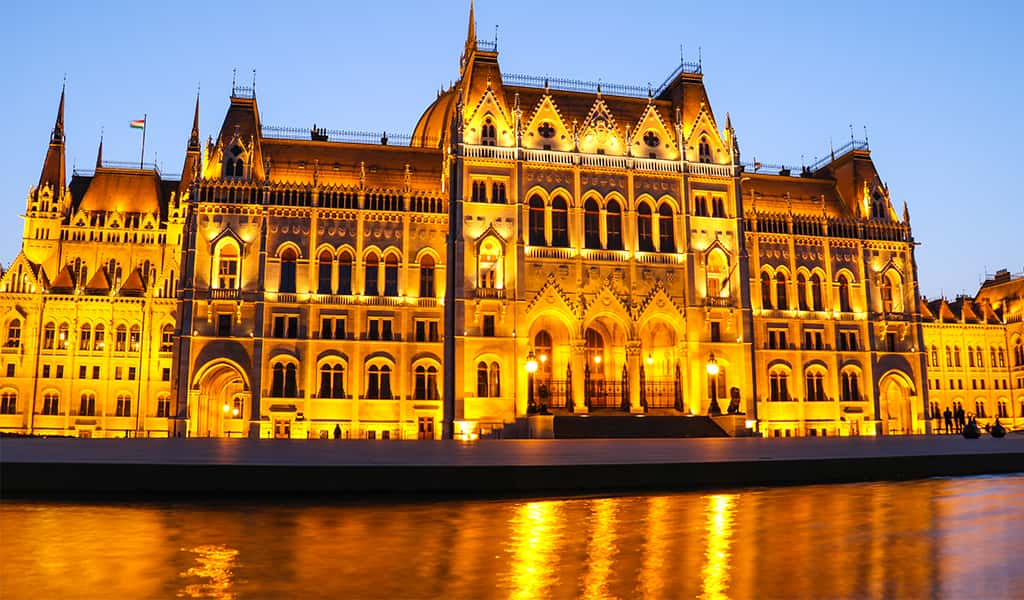
Geography, population and more
Hungary is located in central Europe, surrounded by Austria, Croatia, Romania, Serbia, Slovakia and Ukraine. A mostly flat country, it’s dominated by the Great Hungarian Plain east of the Danube – the major river that divides the country almost in half. Just under 10 million people live here, and the country’s largest cities by population are Budapest (the capital), Debrecen, Miskolc, Szeged, Pecs, Nyiregyhaza, Szekesfehervar, and Kecskemet.
Hungarians know their country as Magyarország, “Land of Magyars.”
Currency and budget
Residents of Hungary speak Hungarian and spend forints. Hungary is known for its affordability even to budget-savvy travelers. In fact, it nabbed seventh place on Thrifty Nomads’ 10 best budget travel destinations for 2019.
You’ll be able to eat here inexpensively, too. Thrifty Nomads estimates a simple meal will cost you $5 to $8 USD ($6.72 to $10.76 CDN), while a beer runs $1 to $2 ($1.34 to $2.69 CDN).
Budget Your Trip, which publishes average travel costs for thousands of cities around the world, has budget breakdowns for different time frames and expenses, including accommodation, transportation, tips and more. According to the site, at the cheap end of the spectrum, a couple traveling the country for two weeks could spend 229,275 Ft ($1,069 CDN), while a mid-range trip would cost them 585,132 Ft ($2,729 CDN) and a luxury vacation would run 1,507,375 Ft ($7,030) per couple for two weeks.
Several travel bloggers have written cost breakdowns for traveling Hungary – helpful reading if you’re wondering how much to budget for food, accommodations, attractions, and more. See the Savvy Backpacker’s daily costs to visit Budapest and The Culture Trip’s A budget traveler’s guide to Budapest
Tip: It’s customary to tip waitstaff 10 to 15% of your tab, while you’re safe to hand 10% to both your bartender and taxi driver. Only tip if the service charge isn’t already included, and hand it directly to the person serving you (it’s considered rude to leave a tip on the table).
Take your vacation mid or late year
Hungary continues to rank high on the list of travel recommendations, courtesy of the fantastic weather and interesting activities and events year-round. the U.S. News ranked Budapest as #2 on its Best Places to Visit in Eastern Europe list, and advises visiting between March and May and September through November.
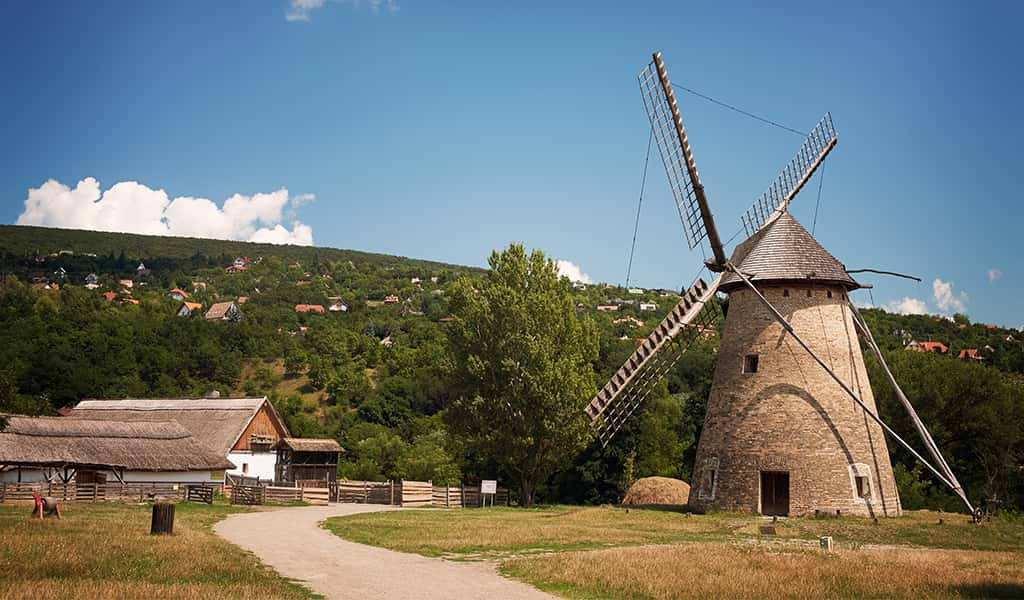
Book a dorm room, hotel or Airbnb
You’re in luck for a place to crash and save – Nomadic Matt says accommodations range from 2,500 Ft ($9 USD or $11.66 CDN) per night for a dorm room at a hostel (where free wi-fi is common, you may get a free breakfast and even be fortunate enough to have kitchen access if you want to cook your own meals), to 6,000 Ft ($22 USD or $27.98 CDN) per night at a budget hotel or 12,000 Ft ($43 USD or $55.96 CDN) per night at a three-star hotel. Outside Budapest your rates will be even cheaper.
You can try booking.com for guesthouses, hotels, apartments, homes and other unique places to stay. There’s also the old standby, Airbnb – plenty of beautiful, centrally located places are available in Budapest and throughout Hungary. Although you may pay a bit more for a bright, comfy atmosphere and more privacy – these ranged anywhere from about $50 to $100 Canadian at time of writing – it may be worth it for the experience.
Passport and safety issues
Because Hungary is a Schengen country, Canadian citizens don’t need a visa to travel here, but watch how long you stay; visa-free travel only applies to stays of up to 90 days in any 180-day period. Stays are cumulative and include visits to any Schengen country (this information can change any time, so always check with Canada’s foreign diplomatic missions and consulates).
If you’re using a regular Canadian passport, it must be valid for at least three months beyond the date you expect to leave the Schengen area. Learn more about passports and visas at Travel GC.
Safety
Take all the usual precautions you do when you travel; always be aware of your surroundings, keep your belongings and baggage close, lock your doors when traveling by car and avoid unlit areas. The Government of Canada cautions that petty crime such as pickpocketing and purse snatching occurs, particularly at markets, on public transportation and in railway stations, shopping centres and tourist areas.
Similar to many international destinations, terrorism is also a threat and targets could include public areas, tourist attractions, restaurants, shopping centres, markets, hotels, airports and other transportation hubs. Always stay aware of your surroundings.
Natural disasters and climate warnings
In addition to human hazards, it’s also important to be aware that natural disasters could lead to a sudden change in plans. Spring flooding can happen between March and May, and occurs annually in the northeast, along the watershed of the upper Tisza River. The Danube River also floods periodically in the spring. Keep these tips in mind if you’re traveling in Hungary during these times:
- be prepared to change, cut short or cancel your travel plans on short notice
- stay informed of the latest regional weather forecasts
- keep emergency contact information for your airline or tour operator
- follow local authorities’ advice and instructions
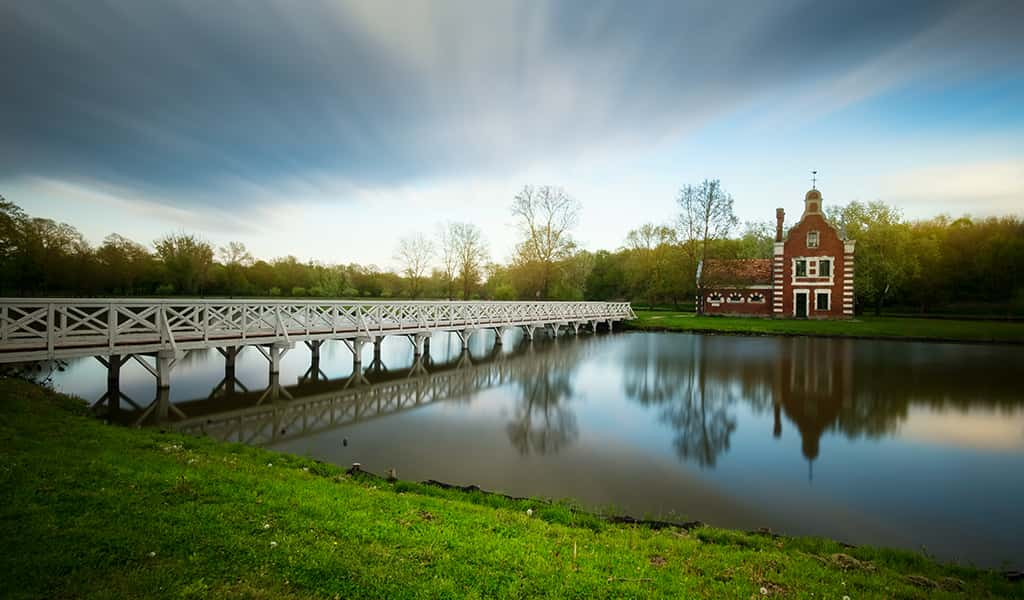
Hunt bargains online and be flexible with travel times
Flying into Hungary, you’re likely to land in one of these airports, which have direct flights from Canada, according to Skyscanner:
Never Ending Footsteps recommends visiting watching Secret Flying and Skyscanner for deals on flights, adding that because Budapest isn’t one of Europe’s major airports, deals to Hungary are more difficult to find than other popular European destinations. You’ll probably be able to catch a flight for somewhere within Europe for as little as €350 ($524.77 CDN) return, she says, adding you can then find return flights between that destination to Hungary on Skyscanner. Or, just use Skyscanner off the bat, searching for the cheapest days to fly for each month from anywhere in another country.
In short, the more flexible you’re willing to be on the time of year you travel and which airports you arrive and depart from, the more cash you can save on flights.
Public transportation
Europe is well-known for its exceptional public transportation hubs, and Hungary is no different. Once you land in Budapest (most likely at Budapest Ferenc Liszt International Airport), you can catch the 200E or 100E bus from the airport to the city and hump on a metro or tram, notes Nomadic Matt in his Backpacking Budapest Travel Guide (2019).
He says trains and buses are reliable options for getting into and out of Budapest, with direct routes available to many other European cities including Vienna, Prague, Berlin and more.
When you arrive, you’ll want to pick up a Eurail pass (for non-Europeans – Europeans get an Interrail pass) so you can take hassle-free train trips. Check on whether you’ll need to pre-book your route – an easy task (just book 24 hours in advance at a train station), say the Travelling Weasels, who took a circular route of several Hungary cities, including Budapest, Szeged, Pecs, Balaton, and Györ before returning to the capital. Their itinerary is worth reading, as they tracked their activities in detail – where they stopped, the attractions they saw, where they stayed and for how long.
A caveat: Hungary’s train network is centralized in Budapest, so for most cross-country trips you’ll need to transfer there (meaning you could travel a long way in the opposite direction of your destination to connect via the capital), mentions Travelsewhere. On the plus side, David (the self-described travel addict behind Travelsewhere) says he found the trains so good here that he never had to take a bus. And within the cities, Hungary’s extensive network includes metro, trams and buses. The southern city of Szeged is also linked by tram. Hop on a local bus to get to smaller destinations.
Fact: Budapest is home to the oldest electric underground metro on continental Europe. – Travelsewhere

Taste legendary goulash and other mouthwatering dishes
Gulyás (goulash) is one of Hungary’s most popular dishes. While almost each region has its own variety, a basic goulash is a mix of soup and stew, with beef (sometimes veal or pork), carrot, potato, spices and the typical paprika, says The Culture Trip. Find it at Budapest Bisztró, which is known for its legendary Gulyás soup. This modern venue offers a rich choice of traditional dishes, great service and atmosphere.
Fact: Goulash has a long history going back to the ninth century, but it only became a national symbol and a tool for preserving Hungarian identity in the 1800s. – The Culture Trip
If you’re hoping to eat like a local, look for étkezdes – no-frills restaurants that serve home-style dishes at low prices (keep in mind they’re closed on weekends and accept cash only).
Taking this route, you can look forward to discovering places like Budapest’s Kívánság Étkezde, a local eatery that offers classic Hungarian food like the mátrai borzaska (a fried pork cutlet coated in a potato-based breading and topped with sour cream and grated cheese (1,927.24 Ft €6 or $9 CDN)), and Belvárosi Disznótoros, a self-service eatery that offers fully prepared and to-be-prepared traditional Hungarian meat dishes like blood sausage, wild boar stew, chicken cutlets, and more, says Offbeat Budapest, restaurant and city guide featuring places both within and well beyond the main attractions. For more advice on restaurants off the beaten path, see Where to eat with the locals: The 20 best cheap restaurants in Budapest.
Eating out and eating local
Looking to pick up a few delicious finds for a home-cooked meal? Head to the Grand Market Hall in Budapest, said to be the most beautiful and largest of all Budapest market halls. Five minutes from the city centre, the market is open Monday to Saturday and you’ll find everything from fresh local fruits and vegetables to fantastic salamis, fresh fish, Hungarian paprika and Tokaj wines, to clothes, bags and souvenirs. You can even pick up home style meals or Hungarian snacks like Langos at the food stands and eateries on the upper floor.
If you’re hungry for more Hungarian dishes, your choices range from Paprikás csirke (chicken paprikash) to Túrós Csusza (cheese dumplings) and more. See Everything you need to eat and drink in Hungary

What to do
In Budapest, a myriad of activities await – even if you’re a budget-conscious traveler.
Explore Castle Hill
This kilometre-long limestone plateau contains some of Budapest’s most important medieval monuments and museums, and is a UNESCO World Heritage Site. Below it, you’ll find a 28 kilometre-long network of caves created by thermal springs. Learn more about Castle Hill
Soak in thermal baths
What’s a vacation without taking time for some well-deserved R&R? That’s just what you’ll find if you visit a thermal bath. Take the Széchenyi Thermal Baths – some of the most famous in Hungary, if not Europe, according to Two Wandering Soles. For a daily entrance fee of 5,200 Ft ($24.27 CDN) on weekdays and 5,400 Ft ($25.20 CDN) on weekends, you can take a relaxing swim under the sun in cool waters outside, or take a dip in the increasingly hotter pools inside. Jet Setting Fools recommends Lukacs Thermal Baths for a lower budget Budapest bath experience – a two-hour visit is just $10 USD ($13.34 CDN).
Venture outside Budapest
Although a lot of the travel blogs you’ll read on Hungary are all about exploring Budapest, Nomadic Matt takes a broader perspective and makes a compelling case for venturing outside the capital – there’s a lot more to the country than its capital, such as:
- the Necropolis in Pecs,
- the town of Hévíz, where you can soak in the world’s largest thermal lake an inactive, 400-metre high volcano at Gulacs Hill
- the town of Eger, known for its historic castle, stunning Baroque architecture and more
Goats on the Road recommends taking a free, self-guided tour of some of Europe’s most well-preserved historical sites. They also mentioned the Károlyi Gardens, Szabadság Square, Heroes Square, Millenáris Park and more.
You can get a taste of Hungarian history by climbing atop a horse for a riding lesson or going for a hack. The country’s equestrian traditions date back to when Hungarians rode into the Carpathian Basin on horseback and conquered central European territory, notes CNN Travel.
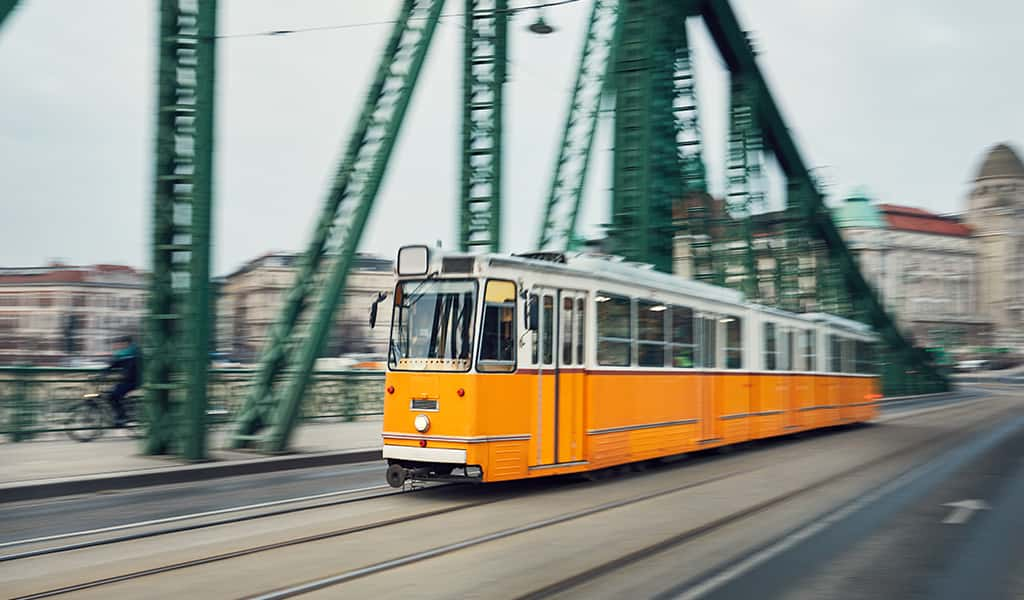
Don’t forget to tell us about your experience! Have you ever traveled to Hungary, or are you planning to book a trip? What are your best tips when it comes to saving for vacations? We’d love to hear what you’ve planned, or any tips we’ve missed. Share your story in the comments and tell us what destinations are on your wish list. Our team love saving for holidays and we hope to inspire our members with exciting suggestions to spend your Caddle money.
Know when to travel, the best Thailand beaches and food tips for your vacation
Travel Thailand
Thailand has always been a backpacker’s paradise and has now evolved into one of the world’s most popular tourist haven for adventurers, digital nomads, honeymooners, hikers and more. From lush rainforests and miles of unspoiled coastline to floating markets, historic temples, and the bustling city of Bangkok, there’s lots to see and do in the Land of Smiles.
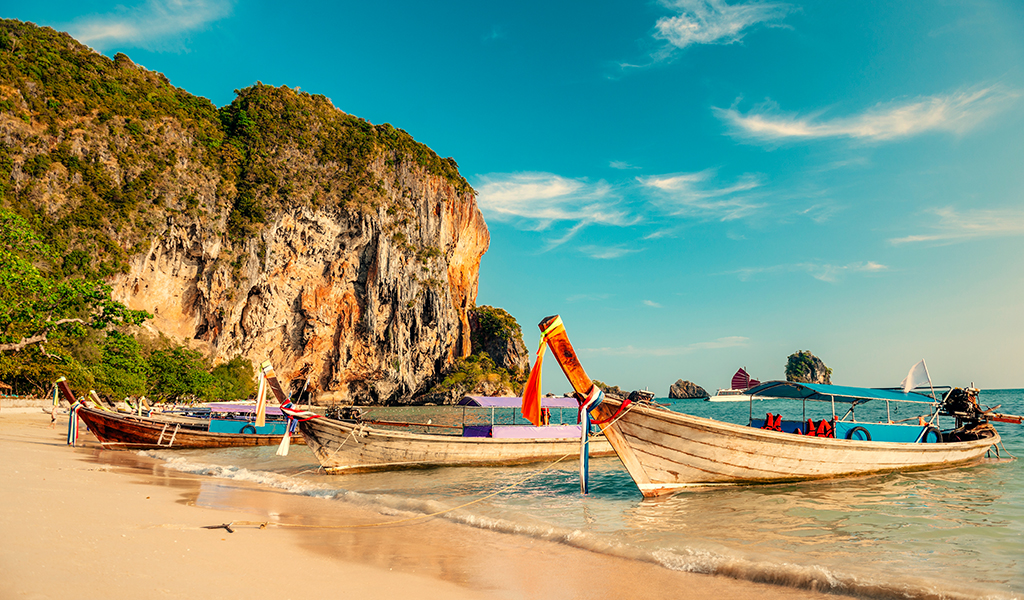
Geography and Currency
Thailand is located in southeast Asia and shares borders with four countries, including Burma, Cambodia, Malaysia, and Lao People’s Democratic Republic. Its capital city is Bangkok.
The Thai people use Baht (THB) as their currency. One of the most popular tourist destinations in the world, the country welcomed more than 34 million visitors in 2018, and those numbers are only predicted to grow in 2019.
No wonder – when you’re nicknamed the ‘Land of Smiles’, you’re bound to attract tens of millions.
Thailand is an incredibly budget-friendly destination – your Baht gets you a lot here! We’ll give you some tips on how to save on activities, places to stay, transportation, food and more.
Travel between November and April; avoid monsoon season
Your dream vacation in Thailand probably depends a lot on the weather; you’ll want to relax on idyllic beaches, shop the floating market, explore temples and spend lots of time outdoors. Travel + Leisure says the best time to visit is between the end of November and the end of April. Rainy season usually runs from July through October, but it’s possible to see a major storm as early as May.
That said, there are pluses to booking between December and the end of February; for beach goers and island explorers, the air will be less humid, you won’t get scorched by the sun, and you’ll enjoy the light evening breeze.
Tip: Avoid planning your trip during monsoon season, between July and the end of October. – Travel + Leisure.

Stick to local neighbourhoods for accommodations
When it comes to finding a place to stay, when and where you travel matter. TripSavvy has some good tips for the budget-conscious:
<blockquote"Chiang Mai and destinations in Northern Thailand such as Pai are relatively less expensive than Bangkok and the islands. If you're on a shoestring budget, you'll get more for your money in Chiang Mai and northern destinations in Thailand."
You can also scope out local neighbourhoods far away from tourist spots. Khao San Road and Soi Rambuttri are in Bangkok’s Banglamphu area. Though some “weirdness” still exists, many of Khao San Road’s surrounding streets are now lined with chic, boutique guesthouses.
Using smart budget travel techniques, TripSavvy says backpackers can travel Thailand for $25 to $30 US (that’s about $32 to $40 CDN) per day.
Looking to stay in Bangkok? The Pinay Solo Backpacker suggests booking your room early at one of the budget hotels in the city’s financial district. In Silom, you’ll find the Lub d Bangkok Silom Hostel, HQ Hostel, and Hostel Na Nara, while Tara Place is in Khao San Road. You can also check out Lumphini Park, which is packed with affordable rooms.
Of course, although accommodations will cost more in Bangkok, you’ll have more access to transportation and other amenities, notes Helen, who visited Thailand in 2016:
<blockquote"We started in Bangkok and it's an amazing city. I would say it's important to research the area you're staying in as if you move too far out of the city you can be pretty cut off and be reliant on taxis," she said, adding, "The street food is brilliant. Booking a hotel with a pool is a big one as it's so hot that it can be uncomfortable. The Grand Palace is amazing and worth a visit.”
Accommodation budgets vary – travel budget website Budget Your Trip says Canadians can expect to pay about $42 per person per night for a hotel or hostel.
Airbnb is a hot-button issue in Thailand
In January 2018, a court ruled that owners of two condominiums violated the Hotels Act of 2004 by renting their rooms out daily and weekly. It remains to be seen what impact this will have on the popular vacation/home rental website. Regardless, if you want to check out Airbnb spaces for rent, you can do so on their site.

Safety, Visa and passport info
Check risk levels and stay safe
If you choose to visit Thailand, stay safe: As of January 2019, the Canadian government published a travel advisory on its website, saying Canadians should use a high degree of caution in Thailand because of ongoing political tensions and sporadic demonstrations in Bangkok and around the country. Check the current risk level for any destination, read about safety and security measures you should take and find other useful information at travel.gc.ca.
Have a valid passport
Your passport must be valid for at least 6 months after you leave Thailand. Also, make sure it’s in good condition – Thai immigration is strict on the physical condition of passports and if they find defects, you could be refused entry.
Visas
Tourist visas are not required for stays of up to 30 days. If you’re traveling with a regular Canadian passport, you can obtain a 30-day visa upon arrival. With a multiple entry tourist visa, you can stay for up to 60 days. The visa is valid for 6 months and you must get it before traveling.
Entry stamp
Get an entry stamp from an immigration officer when you enter Thailand.

Hop on a train, busm or tuk tuk
Airports
Flying into Thailand, you’ll land in one of eight international airports:
- Suvarnabhumi International Airport (the new Bangkok International Airport)
- Don Mueang International Airport
- Chiang Mai International Airport
- Phuket International Airport
- Hat Yai International Airport
- Krabi International Airport
- Samui International Airport
TripZilla, a southeast Asian online travel magazine, has a comprehensive guide to the busiest airports in Thailand – check it out for information on airport locations, terminals, transportation and more.
Transportation
There’s no shortage of ways to get from point A to point B in Thailand, from hopping on a train, tuk tuk, or rickshaw to hailing a taxi or even jumping on a boat .
If you’re looking for the cheapest way to travel long distances and are not in a rush, Travelhappy.info recommends taking the train. An overnight third class train from Bangkok to Ubon Ratchathani on the border of Laos (a 12-hour trip) cost him only 205 THB ($6.77 US, or $8.90 CDN). Riding from Bangkok to Chiang Mai will cost you 271 THB ($8.94 US, or $11.75 CDN).
Tuk tuks are a well-known form of transport in Thailand and can be found in most parts of the country. The small, three-wheel vehicles are a good option if you’re going door-to-door. Although a ride isn’t the cheapest, this is an iconic experience to try, Culture Trip notes in its helpful guide to navigating transport in Thailand.
The country also has an extensive bus network, minivans (always take the local ones to save time and money), songthaews (a cheap, cheerful bus for traveling short distances locally), skylabs (which look like motorbikes from the front), samlors (motorbikes with sidecars), rickshaws, taxis, motorbike taxis, rental vehicles, ferries and boats, and finally, domestic flights.
There are a number of local city guides and ridesharing apps, too: from Bangkok MRT app to All Thai Taxi , NaviGo, and more.

Head to Bangkok for authentic Thai dishes
Looking for an authentic Thai experience? Head to Bangkok, where you can find delicious street food straight out of roadside push-carts or hidden among the maze of Bangkok night bazaars, says food and travel blogger Seth Lu. From Thai Wanton Mee (Ba Mee), a noodles-and-pork dish, to the freshest raw oysters (Hoi Nang Rom Song Kreung) you’ll find, there’s a good chance you’ll find a new favourite.
You can also eat ‘Thai style’, which means you order several dishes and share with everyone in your group (be prepared to chow down on a lot of food!), notes Tasty Thailand <https://tastythailand.com/how-to-eat-cheaply-in-bangkok-thailand-eat-like-a-thai-and-have-delicious-food/. Just like in Canada, there are also food courts in shopping malls or areas here, and you can easily get a typical Thai meal for two for $5 (about $6.57 CDN).
Tip: Keep your food expenses down by avoiding western restaurants, the more high-society Thai restaurants, and hotels. – Tasty Thailand
Explore parks, beaches, markets, and temples
Explore Prasat Hin Phimai (Phimai Historical Park)
In northeastern Thailand, Prasat Hin Phimai holds one of Thailand’s finest ancient Khmer temple ruins.
Take the trip to escape the crowds and you’ll be rewarded – this UNESCO World Heritage Site is worth the travel time, but beware: “Getting here involved several hours of road travel with multiple transfers,” says travel blog I Wander.
Relax on Koh Lanta’s beaches
Koh Lanta is a beautiful Thai island – ideal for holiday makers and digital nomads, notes Never Ending Voyage, a blog about travel tips from a digital nomad couple. Zip around on a moped or bicycle, and head to Long Beach, where golden sand, pine trees and swim-worthy, clear blue water await.
We also travelled to Koh Sumai and Koh Lanta. Koh Lanta is accessible via Krabi and is a trek but very much worth it. We wished we stayed on that side of Thailand and explored other islands instead. Koh Lanta is very much untouched and really beautiful and special. Koh Samai is nice but more touristy. I would say flying to Koh Samai is the only way as the boat and bus take much longer than advertised as we found out. We spent 17 hours on a bus with breaks and it was tough. – Helen

Wat Phra That Doi Suthep
Wat Phra That Doi Suthep is one of Chiang Mai’s most famous wats (temples). Overlooking the old city, it comprises many intricate and important statues, along with a golden Buddha statue, says travel blog Photo Katha’s guide to temples in Thailand.
If you’re ready to see some lush tropical islands, sign up for a tour and hop in a speedboat or longtail to visit secluded beaches, snorkel and potentially even see monkeys and other wildlife. This was on NOMADasaurus’ list of 10 of the best things to do in Ao Nang, Thailand.
Damnoen Saduak Floating Market
Thailand’s most popular floating market is located in Ratchaburi’s Damnoen Saduak district. Arrange a trip to Damnoen Saduak Floating Market or rent a longtail boat from the village to the market, which features local vendors selling art, cheap and delicious Thai food (for 25 to 50 Baht), and more. Say Sawasdee Ka, or Good Morning, and you’ll probably get a smile, mentions Lady Anne, a Filipino expat blogger who wrote about the market over at Lady and Her Sweet Escapes.
Tip: You will need to wear something on your shoulders and to the knees to any religious location in Thailand or you won’t be allow in.” – Helen
Thailand is a perfect place to visit if you’re looking to immerse yourself in local culture, relax on clean, picturesque sandy beaches, explore nature, indulge your taste buds in authentic Thai dishes, and much more. You can absolutely travel the Land of Smiles on a budget – if you stay in local neighbourhoods, make use of the public transportation system and various ridesharing apps, and hunt down some deliciously cheap street food while on adventure in Bangkok.
Are you travelling to Thailand for the first time? Returning to a favourite destination? What are your best tips when it comes to saving for vacations? We’d love to hear what you’ve planned, or any trips we missed! Share your story in the comments and tell us what destinations are on your wish list. Our team love saving for holidays and we hope to inspire our members with exciting suggestions to spend your Caddle money.
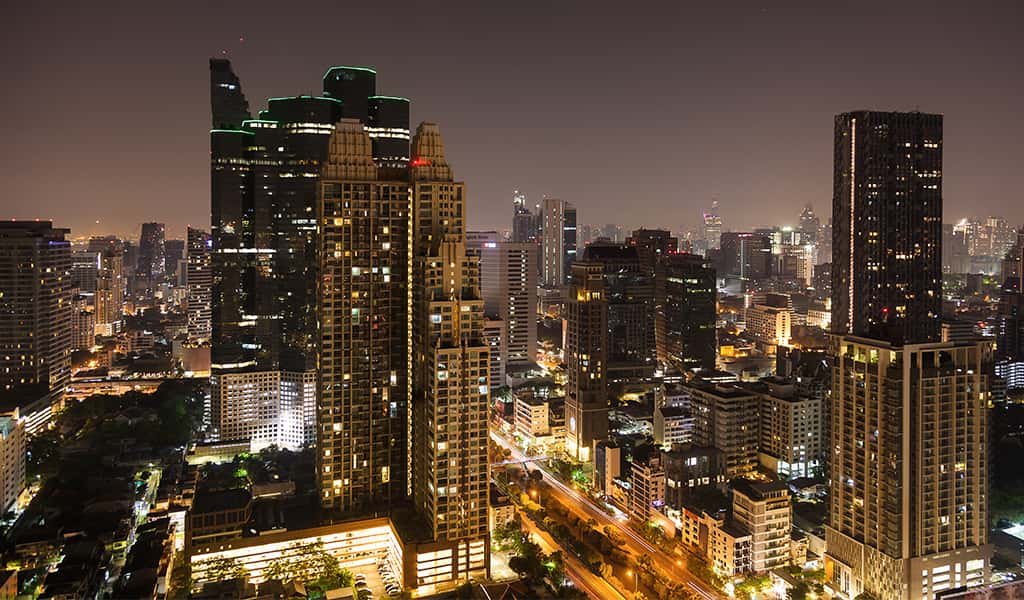
Learn more about traveling on a budget in Thailand
Backpacking Thailand travel guide for 2019 – Nomadic Matt
Thailand travel tips: Options for accommodation and Transportation – Tortuga Backpacks Blog
Erawan National Park (Erawan waterfall) in 2019
3 incredible temples you must visit whilst in Kanchanaburi, Thailand
Chicago things to do and where to stay
Travel Chicago
Before you even hit downtown, with its iconic architecture, refreshing green space and the Chicago River that sprawls through the city’s centre, you’ll start to imagine sinking your teeth into a deep dish pizza, a hot dog loaded with all the fixins, or maybe some delicious BBQ pork.
Whatever you’re craving, Chicago probably has it, from international cuisine and comfort food to satisfy every palette to eye-popping sites like the sprawling lakefront, live theatre scene, family entertainment, parks and shopping galore. Of course, there’s also the famous Wrigley Field, where you can spend an afternoon taking in a game.
Luckily, exploring Chicago on a budget is very doable – if you know which expenses are worth it, where to grab cheap eats and discounts, and how to use the robust public transit system to get around.
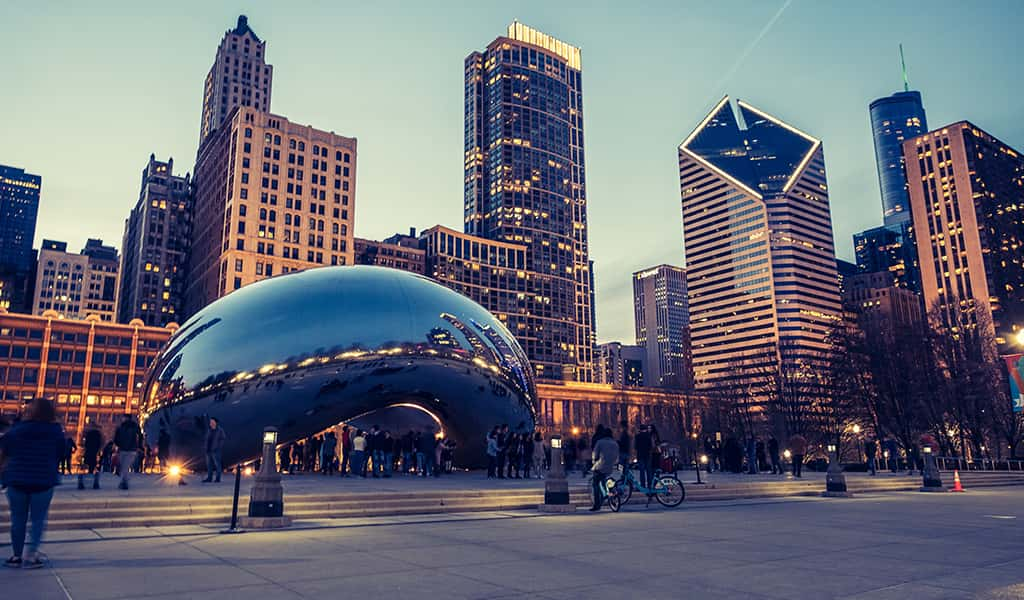
Geography
Chicago sits on the southwest shore of Lake Michigan in the state of Illinois.
Many think the nickname “Windy City” refers to the frigid breezes that blow in off the lake to sweep through the city’s streets, but there are also references that it had a double meaning and also functioned as a metaphorical jab to supposedly boastful citizens.
Visit Chicago during spring or fall for comfort and affordability
For the most affordable accommodations and comfortable temperatures, Passion Passport suggests booking your trip during its shoulder seasons: April, May, September, or October. If you’re okay with cold temps, try early or mid-December – holiday festivities are on, hotel prices more reasonable and the glut of tourists has left.
Bonus: Airfare drops in October and November as well. Watch for cheap flights and book your plane ticket about two months before your visit.
Stay at a hostel or rent an Airbnb
If you’re going to spend most of your time discovering the city, why throw down for an expensive hotel room? You have options when it comes to affordable places to stay during your visit, including the eco-friendly HI Chicago, The J. Ira and Nicki Harris Family Hostel mentioned by Little Things Travel. There, you’ll pay $30 a night and score free amenities like wi-fi, breakfast, sheets, towels and guided tours of the city.
You can also go the Airbnb route and stay in a beautiful apartment or loft – lots of beautiful spaces are available for between $50 to $80 CDN per night.
Check out TimeOut’s guide to amazing Airbnb Chicago homes you can rent.

Visa and passport info
Make sure you have your Canadian passport or a valid NEXUS card if you’re flying into Chicago. In most circumstances, the Government of Canada says Canadian citizens do not require a visitor, business, transit or other visas to enter the United States from Canada but there are some exceptions.
Hop on the bus, train or subway
You’d better have a great public transit system if you have to move 2.7 million people around a city with a river running through it. Here, Chicago doesn’t disappoint – you can get around the city easily via bus, train, subway and on foot (depending on where you need to go).
Airports
Flying into Chicago, you’ll land in one of two international airports:
O’Hare International Airport
Seventeen miles from downtown Chicago, O’Hare is one of the busiest airport hubs in the country and offers restaurants, stores, boutiques, an indoor urban garden, rooms for nursing mothers and more. You’ll also find power stations and unlimited free wi-fi throughout.
Midway International Airport
Just ten miles from downtown Chicago, you’ll find a wide variety of dining, amenities and shops, rooms for nursing mothers and more at Midway, plus unlimited free wi-fi.
Choose Chicago has a great guide to these two airports, and you can check Skyscanner to compare airfare prices for both (sign up for email alerts to know instantly if the price rises or falls.)

Public transit
Public transit here is superb – you can walk, ride a bike or use buses or trains.
Y Travel Blog suggests taking Chicago Transit Authority’s ‘L’ for most places you’ll want to go (The CTA and Choose Chicago have published helpful guides to navigating the train system).
Tip: The ‘L’ is now an official name for Chicago’s train system. It was originally short for “elevated”. – Chicago Transit Authority
The Blue Line runs 24 hours from the O’Hare Airport to downtown Chicago. Travel bloggers Nick and Dariece over at Goats on the Road say you’ll have a 40 to 45 minute ride for $5 (less if you have an unlimited ride pass – pick these up at the airport and at vending machines throughout the city.) Arriving at Chicago Midway International Airport? The Orange Line will get you to the downtown loop area in 20 to 25 minutes.
Buses and trains use the CTA card fares of $2 and $2.25. for one fare, you can transfer twice in a two-hour period. You can also purchase a Ventra Card at stations, retail stores or online.
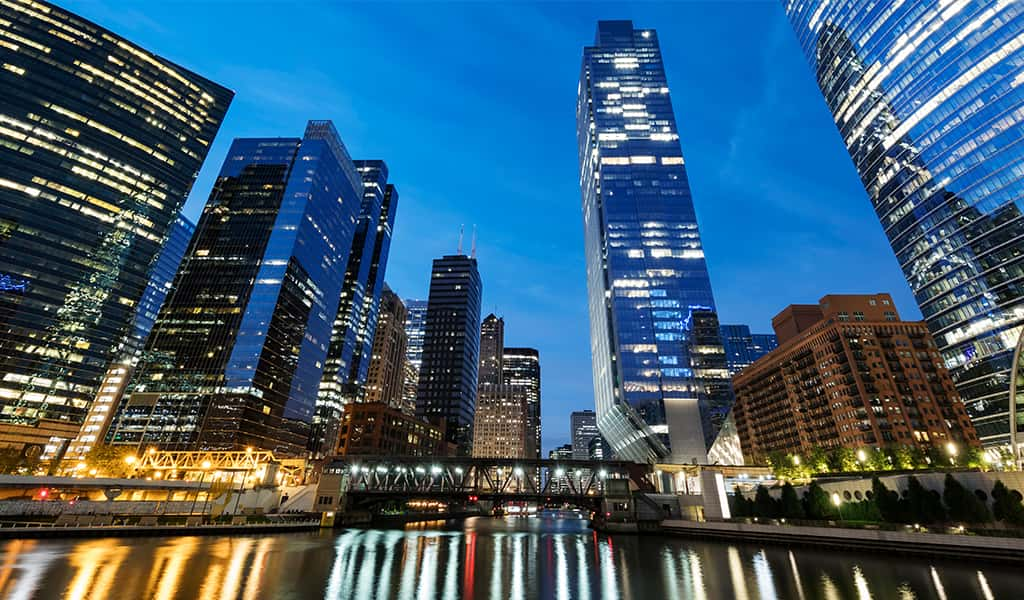
Pick up a deep dish pizza, seafood tacos or Japanese fare
Once you’ve hopped off the train, it’s time to head into town for some delicious eats. Whether you came to Chicago hoping to expand your horizons or indulge in some classic comfort food, you’re in luck; the city is home to restaurants, pubs, and vendors that cater to every palette.
If you’re hoping to indulge in a little (or a lot) of deep-dish style pizza, go to Pizzeria Uno. You might wait a while but this will be worth it – here’s the place where the original deep-dish style pizza was invented! If the line is too long, move on to one of the other best Chicago deep-dish style pizza places.
Looking for a greasy spoon? Head to White Palace Grill, a legendary spot open since 1939 that’s on Vice’s Munchies list of Chicago’s 11 best cheap eats. It serves classic American diner food 24 hours a day, seven days a week.
On one of those nights when you’re hankering for something a little less traditional, go to BIG & little’s for standout seafood tacos, suggests Chicago Eater. Finally, if you’re looking for something spicy, try Ramen-san, where you can get a dish of delicious, authentic Japanese ramen, highly recommended by Chicago-based chef Grant Achatz on Eat Sip Trip.
See iconic architecture, head to Navy Pier, see a show and more. Chicago is full of adventures to take, whether you’re looking for something to keep the kids busy, a couple taking a whirlwind tour of this amazing city, or a group of friends taking it easy.
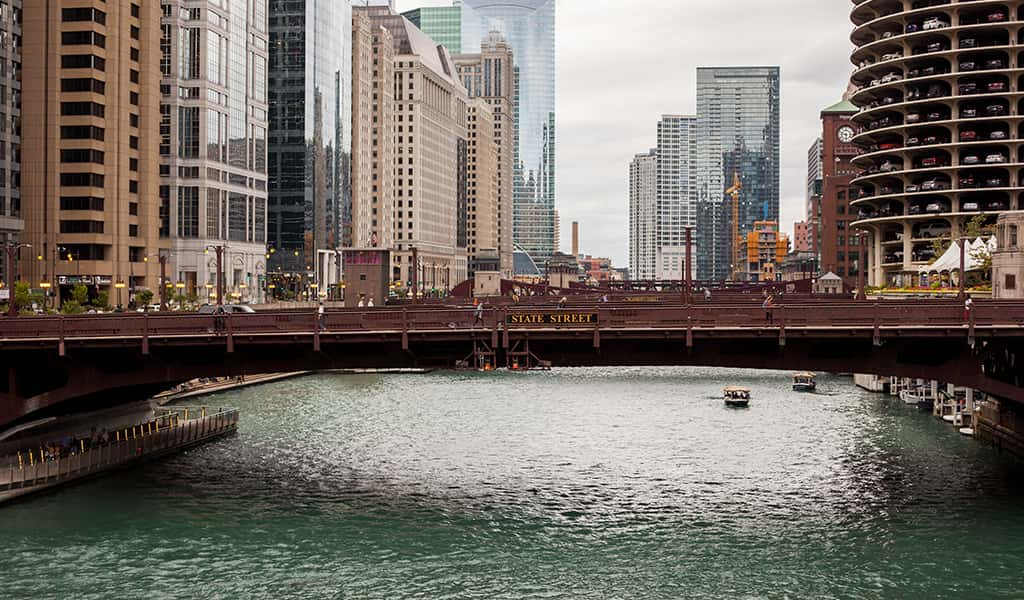
Pick up a Chicago CITYPASS
First, get yourself a CityPASS, which gets you a 51% discount on VIP admission to some of the most iconic attractions in the city and lets you skip ticket lines. At the time we checked in January 2019, adult passes (ages 12+) were $147.73 CDN and child passes (ages 3 to 11) were $124.04 CDN. It’s valid for nine consecutive days starting with the first day you use it. The CityPASS will get you into:
- Shedd Aquarium – Priority Entry
- Skydeck Chicago – Fast Pass
- Field Museum – VIP Entry
- Adler Planetarium – VIP Entry OR Art Institute of Chicago – Fast Pass
- Museum of Science and Industry OR 360 Chicago Observation Deck – Express Entry
- Hop on a Chicago Architecture Foundation Boat Tour
Though you can walk through downtown and get a glimpse of Chicago’s many stunning skyscrapers from the sidewalk, you can’t see them in their entirety. According to TravelingMom, the 90-minute Chicago Architectural Foundation’s River Cruise is “a beautiful slow boat ride through downtown Chicago, past the city’s iconic buildings.”
This isn’t a tour where someone drones on and on in terms you can’t understand. Instead, expect to learn how the city’s architecture interweaves with history, politics, business and art. Bonus: The eye-popping photos you’ll post on Instagram!
Some of the iconic buildings on the list include:
- Marina Towers (which has appeared in dozens of movies)
- The 110-story Willis Tower, one of the tallest buildings in the world
- The massive former Chicago Post Office
- The rounded residential units of River City
From gothic to contemporary, art deco, mid-century modern and more, you’ll see it all here. TravelingMom documented their experience and has some compelling reasons to spend the $46 for a daytime cruise or $49 for a twilight cruise at 7:30 p.m. Note: Purchase your tickets in advance to avoid disappointment.
Explore Navy Pier
Another iconic spot you don’t want to miss, Navy Pier is just over 100 years old and offers 50 acres of unforgettable attractions, experiences and cultural wonders.
In fact, travel blogger Nomadic Matt described it as “a carnival in the city”, with a huge Ferris Wheel, rides and games, theatres, a children’s museum, shopping, restaurants, and more.
Note: There is no admission fee to enter the pier itself, but individual attractions may have admission prices. The pier is closed on Thanksgiving and Christmas.
Stroll or bike along the Chicago lakefront
Need some fresh air? Rent a bike (or just walk) and explore the Chicago Lakefront Trail. See the popular Montrose Beach, the scenic Belmont Harbor in the Lincoln Park neighbourhood, Lincoln Park Zoo, Millenium Park (which isn’t directly on the trail but close enough that you can lock up your bike and take a detour), and the Museum of Science and Industry.
Splinster has a definitive guide to cycling the Chicago Lakefront Trail you’ll want to check before heading out.
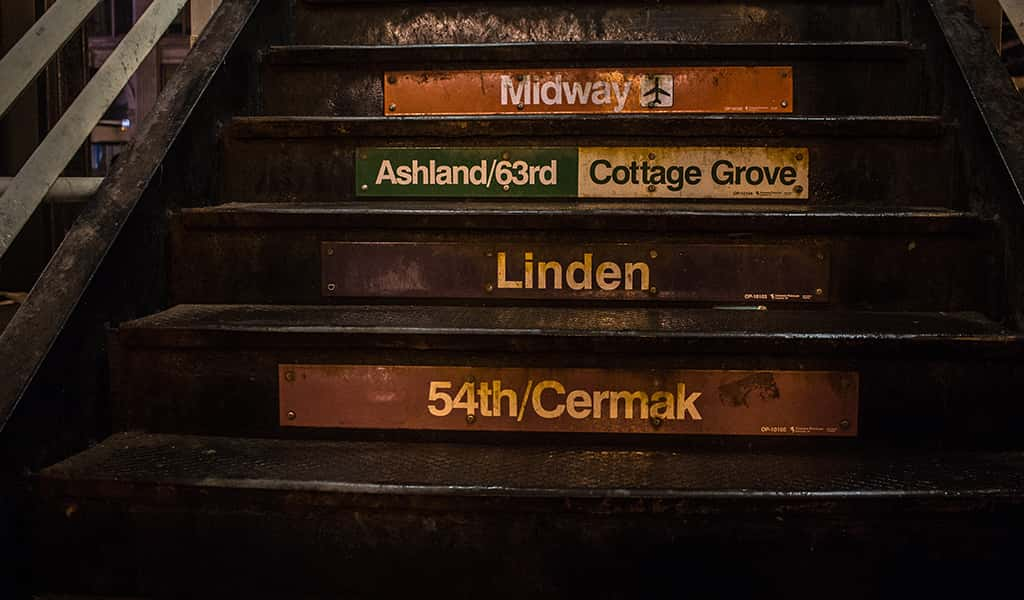
Check out the live theatre scene
The Chicago Theatre is a historic attraction the city is known for. When you first walk up to this iconic national landmark, you’ll probably immediately recognize its six-storey high marquee, which shows up almost any time the city is mentioned.
Built in 1921 and located in downtown Chicago, the French Baroque style theatre features a five-storey lobby. It was the first lavish movie palace in America. As Choose Chicago notes, “comedy legends, rock world tours, acoustic sets and more are all at home in this incredible venue. If you want to see C-H-I-C-A-G-O, this is the place.”
Shop Michigan Avenue’s Magnificent Mile
If you love to shop, Chicago is for you. Techies, fashionistas and bargain hunters will be in heaven in Chicago’s shopping district, which includes The Magnificent Mile. Here you’ll find everything from Chanel to Giorgio Armani, Bloomingdale’s, TJMaxx, Apple and more. There are also attractions, museums, theatres, the 360 Chicago Observatory, comedy clubs, a diverse list of restaurants – almost anything your heart could desire.
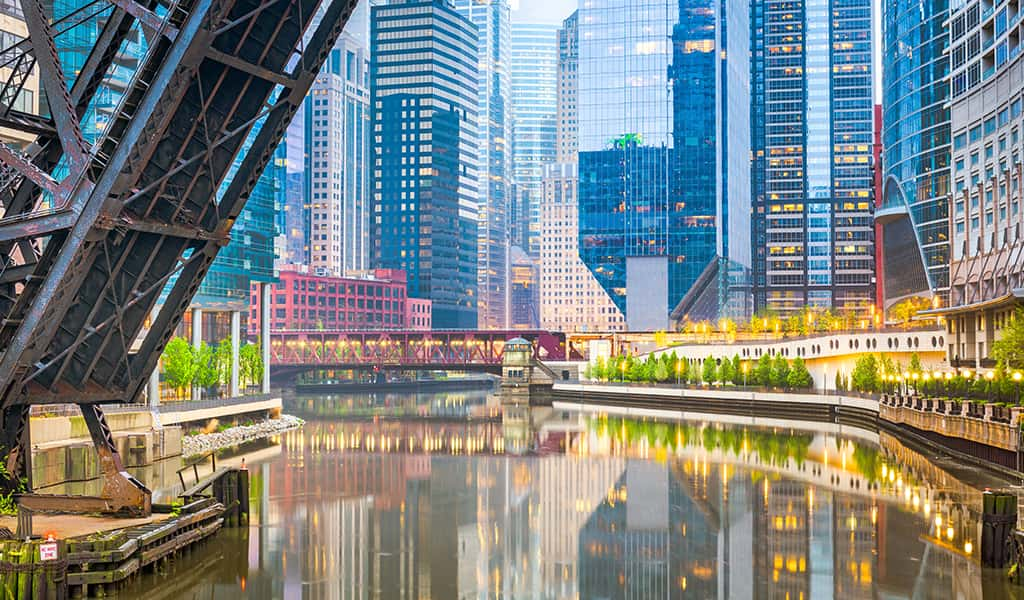
Take in a game at Wrigley Field
After you’ve shopped til you’ve (almost) dropped, take a load off and head to a Chicago Cubs game at Wrigley Field if you visit during baseball season, which runs from March to September.
From seeing the large, 1930s-era red marquee at the main entrance to grabbing some merch and seeing all the action from your seat, this is another activity to add to your list, even if you’re not a baseball fanatic. Ticket prices vary depending on section.
Travel and lifestyle blog Thyme & Love has an in-depth guide to Wrigleyville you should check out. Chicago is an eclectic city with lots to offer everyone from sports fans, foodies, fashionistas and shoppers, families, and kids of all ages. You can visit the city on a budget and with its world-class transportation system, free sights and attractions and lots of cheap eats on offer, there’s no shortage of things to keep everyone entertained while you’re here.
Are you travelling to Chicago for the first time? Returning to a favourite destination? What are your best tips when it comes to saving for vacations? We’d love to hear what you’ve planned, or any trips we missed! Share your story in the comments and tell us what destinations are on your wish list. Our team love saving for holidays and we hope to inspire our members with exciting suggestions to spend your Caddle money.
Trying Malaysian food, visas and advice on travel
Traveling Malaysia
Looking to jet off to an adventure lover’s paradise, with plenty of foodie destinations, sacred historic sites and villages to discover? You’ll want to put Malaysia on your must-visit list.
From the depths of Gua Mulu Cave on the island of Borneo and the Longhouse Villages to Sabah’s Mount Kinabalu, you’ll never run out of sites to see or immersive new experiences to enjoy.
The southeast Asian country, which is actually two separate, similarly sized regions located in the South China Sea, attracted just under 26 million tourists in 2017. Surrounded by Thailand to the north, Singapore to the South and Indonesia to the west, Malaysia is home to a multi-ethnic, multi-cultural population of 32 million people.
If you’re wondering how much you should save, and what to see and do on this trip of a lifetime, make yourself a bowl of wantan mee and dig in – we’ve put together some tips on our personal experiences visiting this lively, colourful destination.
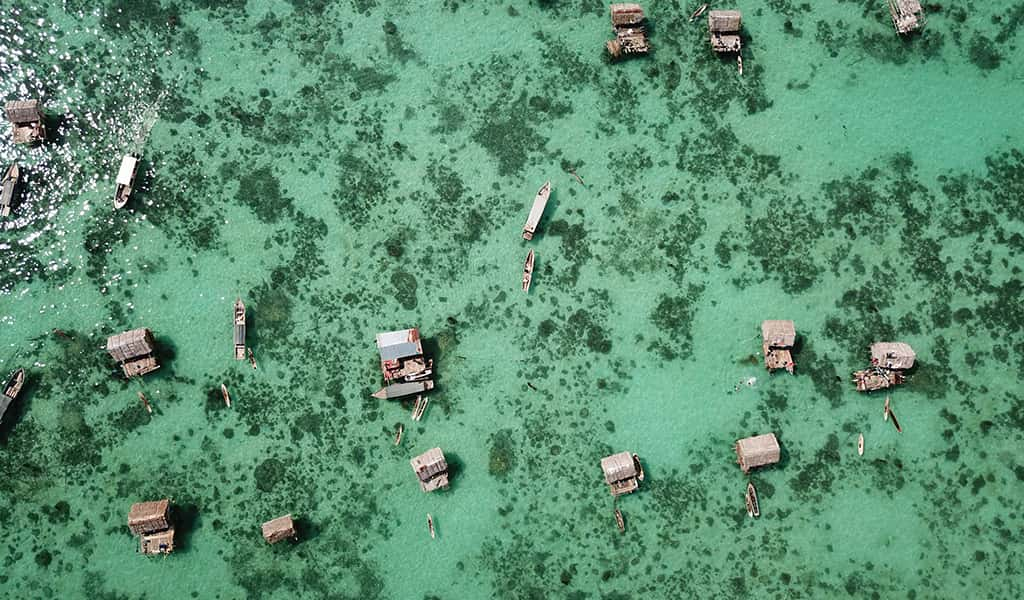
When to go
Weather will be an important factor when you make the trip. Don’t want to get wet? Avoid the east coast during the monsoon season (which starts in November and lasts through March) as this is where the rain will fall, notes The Broke Backpacker. If you’re up for it, you’ll be rewarded with feasting your eyes on a lush green landscape, gushing waterfalls and thinner crowds at major attractions.
Luckily for you, Malaysia offers a few choices of when to visit depending on what you’d like to see and do. While you’ll get the best weather from March through October, you’ll see a number of festivals – like Thaipusam (one of the most important Tamil festivals in Malaysia), the grand cultural celebration of the Chinese New Year, Rainforest World Music Festival, and Eid, a joyful festival that marks the end of Ramadan – happening in January through February and May through July.
Speaking of Ramadan, if you’re keen to travel during the Islamic holy month (usually around May or June), expect to be warmly welcomed by locals and watch smaller cities and villages come to life at night:
“The holy month also sees Ramadan bazaars (special food markets) pop up in most towns and neighbourhoods every evening, offering an array of traditional Malaysian delicacies you may struggle to find at other times of the year (such as laksa Johor, a family-style laksa rarely sold in restaurants). Hotels, too, often put on elaborate Ramadan buffets during the holy month.” – The Journal, Intrepid Travel
You’ll want to plan for logistical challenges by checking transportation schedules, being aware of which areas may be busy and keeping in mind that business hours often change to accommodate this important religious observance.
Currency and travel costs in Malaysia
Malaysia uses the Ringgit for its currency. Affordability is another reason travellers love visiting Malaysia. According to travel budgeting website Budget Your Trip, you can travel in Malaysia for an average daily price of RM315 ($75). The average price of food for one day is RM71 ($17). One couple can find hotel accommodations for RM339 ($81). Of course, when it comes to knowing how much money to take, hearing about a diverse range of experiences can help. See more budget breakdowns on Phenomenal Globe, Nomadic Matt and Lonely Planet.
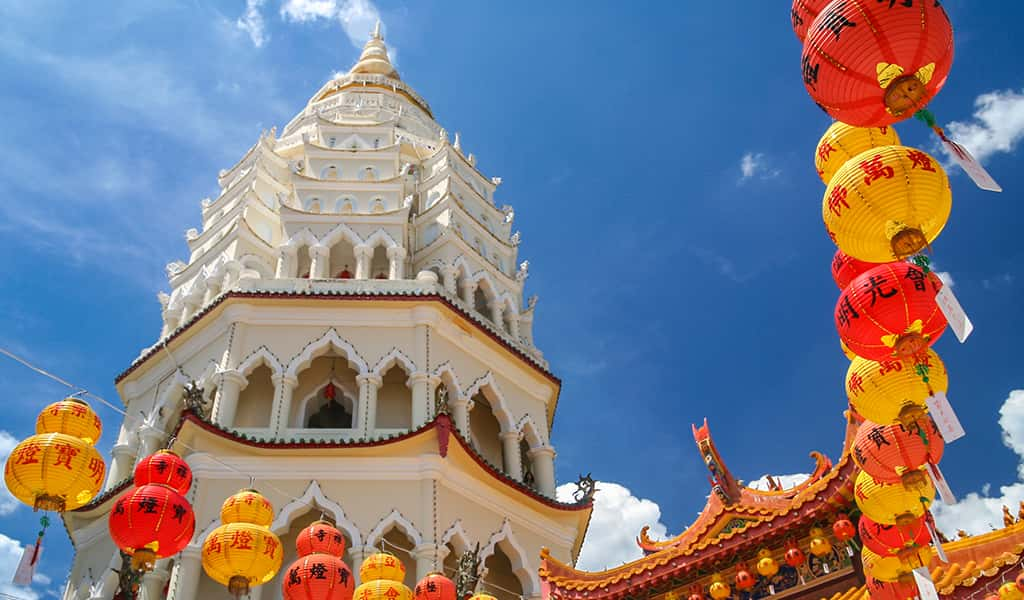
Know Malaysian customs
“Malaysia is a very religious country in my experience and it’s important to plan for this when packing clothes,” advised Helen Duffy, who visited Kuala Lumpur and Penang Island’s Georgetown in 2016. “For women, it’s customary to cover your shoulders and (everything down) to your knees.”
Tip: “While you’re exploring local destinations and meeting people around town, follow Malaysian customs. Men greet men with a handshake, while women greet men with a nod. Greet women with a slight bow.” – Traveling Malaysia
Important notes on air travel
The South China Sea divides Malaysia into two distinct masses. Peninsula Malaysia is located between Thailand to the north and Singapore to the South. It’s more populated and offers more transportation offices than East Malaysia, which shares the enormous Borneo island with tiny Brunei and part of Indonesia, according to SmarterTravel.
You might want to follow Claire’s Footsteps’ recommendation to search for AirAsia’s cheapest dates to fly. Booking directly with them may be significantly cheaper than using Skyscanner. (Editor’s note: She lists her travel, accommodation and other costs during her one-week visit to Malaysia in her post – worth checking out.)
Most flights to Malaysia arrive in Kuala Lumpur, which is served by Kuala Lumpur International Airport (KLIA, the city’s main international hub) and Skypark Subang Airport. From KLIA, you can take a taxi (SmarterTravel recommends using the coupon system) light rail or ride the Airport Coach for about an hour. From Subang Airport, your options are a taxi or direct RapidKL bus to KL Sentral.
Malaysia also hosts more than 30 commercial domestic airports.
Tip: Always check passport and visa requirements for the country you plan to visit. If you’re from Canada or the United States,, you must have a passport that’s valid for six months beyond the period of your stay. Tourist visas are not required for stays of up to 90 days. Canadians: Did you know you can travel to 172 countries without a visa. Americans travel to 166 countries without one.

Book shared accommodation and explore the street food scene
You’ll find a variety of accommodation options in Malaysia, from dorms to brand-name hotels, Airbnbs and more. As Nomadic Matt notes in his Malaysia Travel Guide, you can stay in a dorm for $25 to $50 MYR per night, depending on whether you’re staying in a large city. Airbnbs are spread across the country. Shared accommodation starts for an affordable 50 MYR per night. If you prefer privacy, you can have an entire home or apartment to yourself for 250 MYR per night. .
Staying on the island of Penang? Travel blogger Ashley Abroad recommends Roomates Penang, which bills itself as the “coziest guesthouse in Penang” for its “central location, glacial AC, historic Chinese shophouse facade and reasonable price.”
After a good night’s sleep, it’s time to explore the island. Adventurous travel bloggers On the Way to TV recommend taking in Georgetown’s famous street art, the bustling shopping district and gorgeous architectural landmarks including Fort Cornwallis City Hall and Penang State Museum. For food, swing by Kapitan, a restaurant in Little India where you can indulge your taste buds with a delectable feast.
Penang is known as one of the world’s best gastronomic destinations. Matador Network suggests hunting down a delicious meal of Char Koey Teow before renting a bike to see the some of the area’s famous murals.
Helen found Kuala Lumpur to be a “vibrant, exciting city with an amazing food culture,” adding the food she found on her street food tour was “affordable and delicious.”
Malaysia is the perfect spot to discover a new international culinary favorite. Its capital city Kuala Lumpur hosts five hot spots, including Jalan Alor – a perfect place to start your foray into the country’s authentic street-food scene, and Hutong Lot 10, described by The Culture Trip as “a maze of food wonders featuring some of the country’s beloved heritage dishes”, from Ho Weng Kee’s wantan mee to Soong Kee’s beef noodles.
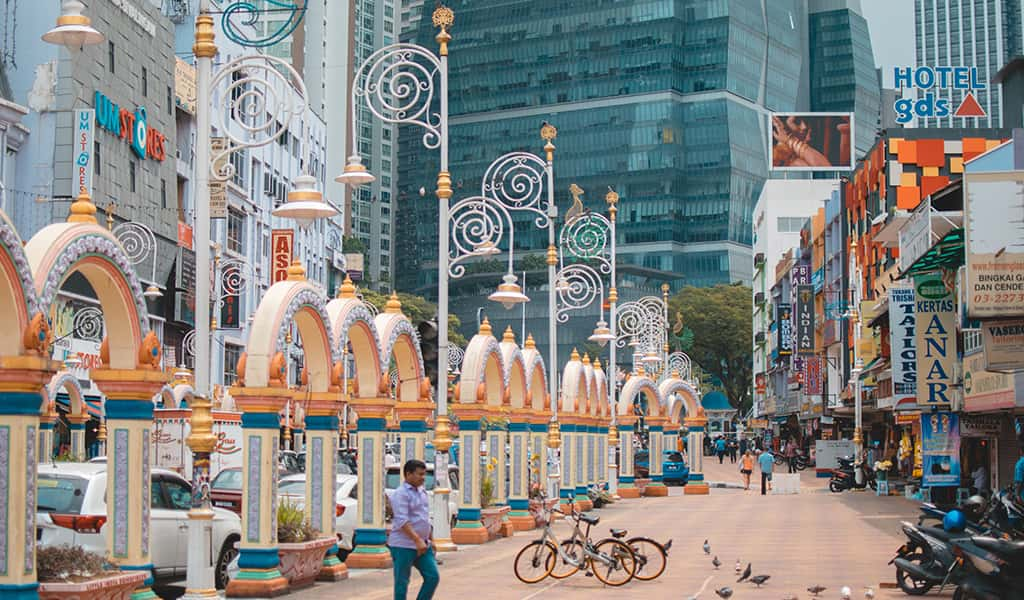
Discover Malaysian culture via public transport, train or taxi
Next, you’ll probably want to see some of Malaysia’s most popular attractions. Look to Jalan Lembah Perdana in Kuala Lumpur, where you’ll find something to fascinate you whether you’re passionate about spirituality, history, law and order or nature. The Islamic Arts Museum, National Mosque, KL Butterfly Park, Orchid Hibiscus Gardens, Royal Malaysian Police Museum, National Planetarium and more are all within a short distance of one another.
To get there, the Islamic Arts Museum advises taking advantage of Kuala Lumpur’s mass public transit system by opting for the RapidKL bus (B101 and B112) and get off at the Dayabumi Complex. From the complex, walk toward the National Mosque. You can also grab a convenient taxi, Uber, or use the popular Grab app.

An adventure lover’s paradise
Adventurous souls will find their paradise in Malaysia. Whether you relish the opportunity to discover mountainous peaks, explore the depths of mysterious caves or even try some BASE jumping, you’ll have endless chances to indulge your craving for an adrenaline rush.
Matador Network suggests hiking to the top of Mount Kinabalu (the tallest peak in Borneo’s Crocker Range), exploring Gua Mulu Cave (a UNESCO World Heritage Site situated in Gunung Mulu National Park), and checking out KL Tower International Jump Malaysia, a four-day base jumping event that welcomes about 100 base jumpers from more than 20 countries to Kuala Lumpur Tower annually in September or October. These are just a few of the 16 Malaysian travel experiences Matador Network recommends taking before you die.
Malaysia’s diverse food culture, lively attractions, welcoming atmosphere and deep connection to Asian history and spirituality will make your trip an unforgettable one, even if you’re traveling on a budget.
Don’t forget to tell us about your experience! Have you ever traveled to Malaysia, or are you planning to book a trip? What are your best tips when it comes to saving for vacations? We’d love to hear what you’ve planned, or any tips we’ve missed. Share your story in the comments and tell us what destinations are on your wish list. Our team love saving for holidays and we hope to inspire our members with exciting suggestions to spend your Caddle money.

Learn more about traveling in Malaysia
KL Layover Guide: Essential Info, plus 9 alternative things to do on a layover in Kuala Lumpur, Malaysia – Wander-Lush
Malaysia Travel Tips – Adventure in You
Travel Tips for Malaysia – Geographia
Survival Guide: Top 10 tips for travelling to Malaysia – Culture Trip
15 fun facts about Malaysia that will get you all excited – ExpatGo
Staying at a Longhouse in Borneo, Malaysia – Experiencing Indigenous Sarawak – Borders of Adventure
The best things to do in the Netherlands
When you picture The Netherlands, a few images probably come to mind: Windmills. Brilliantly colourful tulips, and shops that beckon to be explored. But this European country has so much more: Beautiful canals, historical architecture and museums that cater to every interest. Not to mention the food – everything from stroop wafels to delicious Gouda cheese.
With so many uniquely wonderful experiences to enjoy, it’s no wonder tourism in The Netherlands is growing and expected to soar over the next decade. According to The Netherlands Board of Tourism and Conventions, 18 million tourists from abroad visited the country in 2017. By 2030, that number is expected to hit 29 million.
If you’re looking to travel to The Netherlands on a budget, we’ve got good news – we’ve put together some tips based on our personal experiences and research of the best travel bloggers who’ve covered one of the hottest destinations in Europe.
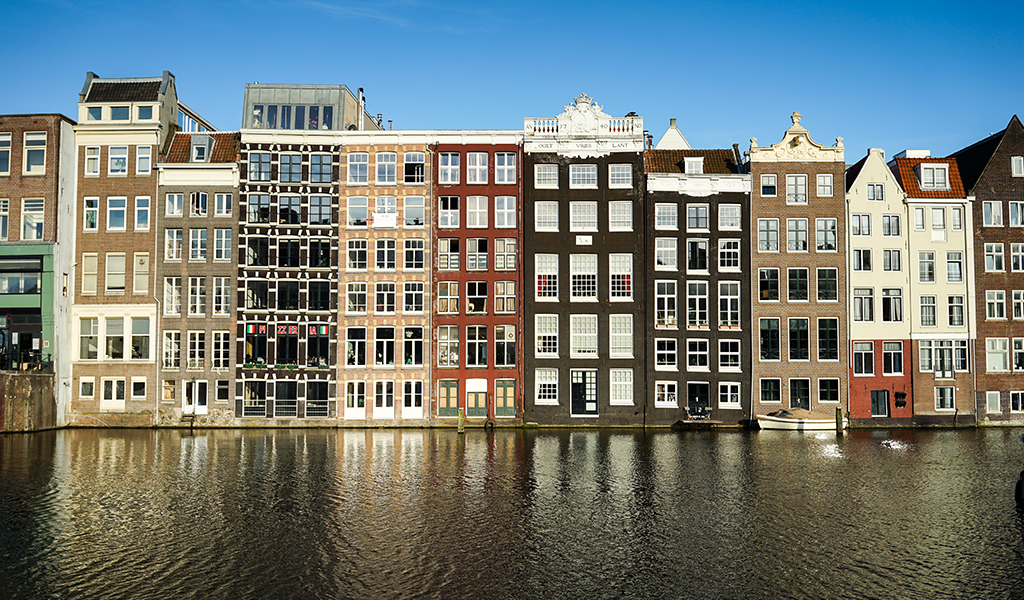
Geography
If you’ve never been to Holland or The Netherlands, the first thing you must know is that you’ll often hear these two terms used interchangeably. However, they’re actually different.
Holland is in The Netherlands and is actually divided into two provinces- North Holland and South Holland. Adding to the intrigue (and confusion) of this historic locale is that while Holland is a part of The Netherlands, it’s also used as a synonym for The Netherlands. The country is home to a breathtakingly beautiful landscape of colourful tulip fields, winding cycling routes, world famous canals and of course, the iconic windmills. Its transportation system is one of the best in the world.
Go for a bike ride through Rotterdam
The Netherlands is most vibrant and bustling throughout the spring and summer. The high season stretches from June to August. If you’ve got your heart set on a bike ride through the picturesque city of Rotterdam or spending the morning relaxing with your newspaper at a café terrace, this is the time to go as you’ll enjoy balmy temps.
Bonus: Everything is open. Keep in mind the famous museums will be packed with crowds and you’ll pay peak prices, so Lonely Planet says you should book ahead
During the “shoulder season” (April & May, September & October), you’ll find most sights open and the fewest crowds. Plus, prices are moderate and you’ll only need to book popular places in Amsterdam if you’re planning on sightseeing, says Lonely Planet. However, weather can be wet and cold. Bring warm clothes for outdoor cafés.
In contrast, you’ll find many sights outside the major cities close during the low season of November to March, and weather can be chilly and snowy (cyclists beware), but deals abound.
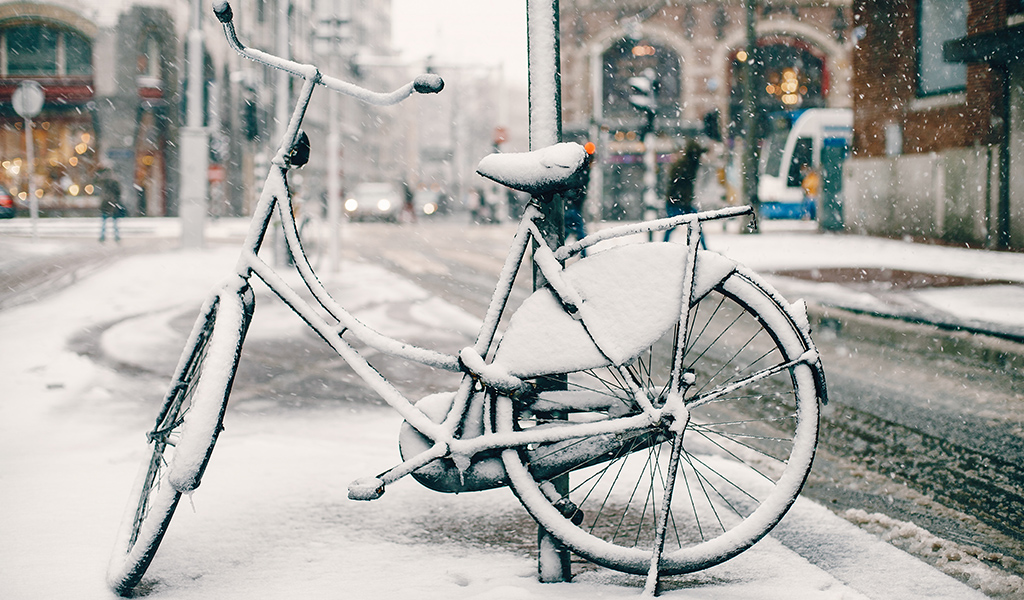
Stick to Airbnbs, hostels and budget hotels to save on accommodations
Costs for accommodation vary wildly depending on where you want to stay. Here’s what Nomadic Matt says you should budget for different types of Airbnbs, hostels or budget hotels. If you’re hoping to stay in Amsterdam, expect to pay more for each of these options:
Airbnb
Average about 15 euros (€) per night for a shared room; €50 to €60 euros per night for entire homes, including studio apartments.
Hostels
Typically €15 to €30 per night per dorm room (If you’re looking for a private room, make that €60 to €80 per night per two-person room, and add €20 to that in Amsterdam).
Suggestion: The Flying Pig Downtown, St. Christopher’s at the Winston and The Meeting Point, all in Amsterdam.
Budget hotel
€50 to €60 per night for a private bathroom and wi-fi. If you go the hotel route, The Brave Dame has a list of budget-friendly hotels, including:
- Marnix Hotel (Amsterdam)
- Kingkool The Hague City Hostel (The Hague)
- Budget Hotel (Leiden)
- Hostel ROOM (Rotterdam)
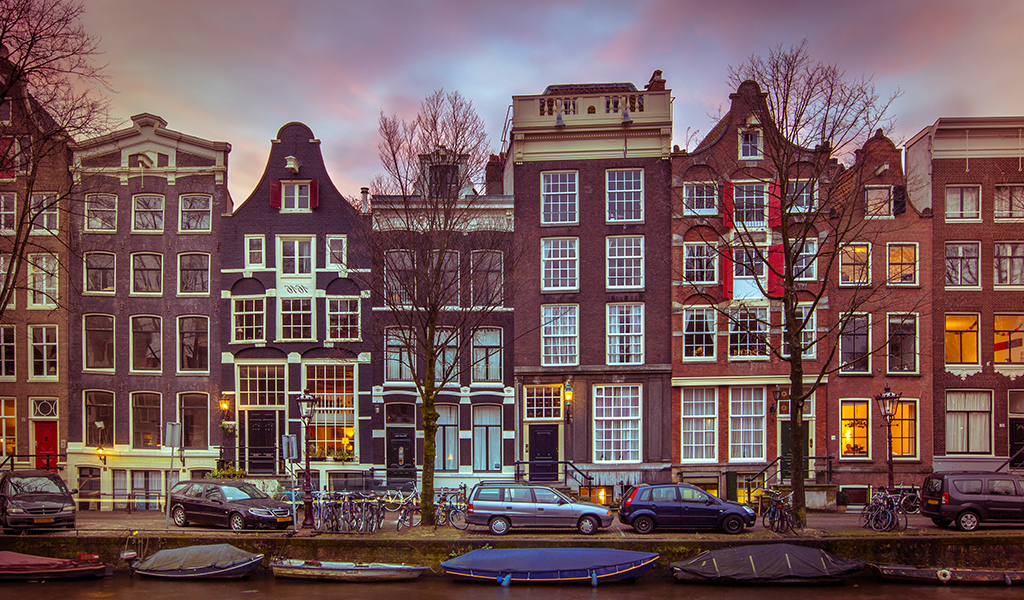
Visa information
The Netherlands is a Schengen area country (Canadian citizens do not need a visa to travel within the Schengen area, but visa-free travel only applies to stays of up to 90 days in any 180-day period. Entry requirements vary depending on the type of passport you use for travel. Find out more about short stay visas and travelling between Canada & the Netherlands at Netherlandsandyou.nl.
Hop on a train, take the metro or rent a bicycle
Thanks to its highly populated cities and modern infrastructure, the Netherlands boasts one of the best, most reliable public transportation systems in the world, and the country has one of the most dense road networks. After touching down at one of the major airports, many look to the rail network to get around and even cycle between destinations.
Airports
Flying into The Netherlands, you’re likely to land in one of the country’s top five civilian airports:
- Amsterdam Airport Schiphol
- Eindhoven Airport
- Rotterdam The Hague Airport
- Maastricht Aachen Airport
- Groningen Airport Eelde
While it’s the most convenient airport to Amsterdam, Amsterdam Airport Schiphol is also less affordable choice, as some of the major low-cost carriers operate out of smaller airports. See TripSavvy’s list of Netherlands airports for details, pros and cons.
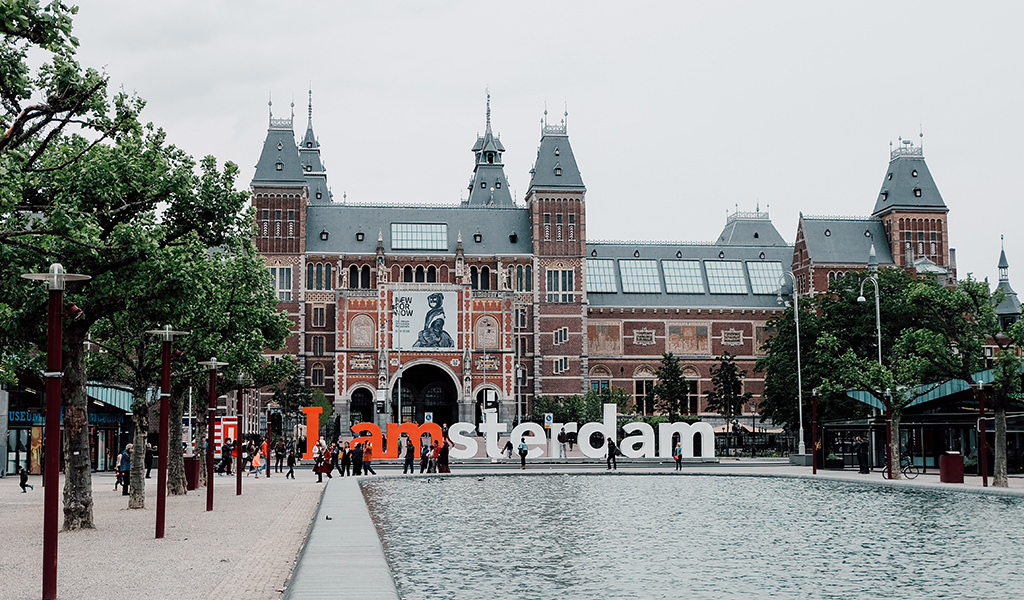
Pick up an OV Chipcard
You’ll want to buy an OV Chipcard (Chipkaart), which is like a fast pass or e-card you swipe as you board and leave to pay your fares on a bus, train or metro. You can get a personal OV Chipcard by applying and providing a photo. There’s also an anonymous one, which can be purchased at machines throughout the rail system. Top up your anonymous card (7,50) with €20.
Tips: Always keep your OV Chipkaart topped up. If you don’t have enough to pay for a fare, you could be fined triple the cost. – Netherlands Tourism
Take a train
Buy a day train card
Day train cards (dagkaart) are on sale at supermarkets and local shops, often for €15. If you have an OV Chipcard, you can also get an Advantage card (Dal Voordeel) for €50. Also check discount sites like spoordeelwinkel,, recommends DutchReview, which published a great guide to getting a cheap Dutch train ticket .
The national rail company NS (Nederlandse Spoorwegen) operates most of the trains in the Netherlands and you have a few different options when it comes to taking one, including:
Sprinter trains
These trains travel in short spurts, stopping at regular intervals in small towns (as well as the big stations) in between. If you need to get to a small town, this is your best option. But beware: Travel blogger Adventure Ellen says Sprinters chug along slowly. Plus, there are no bathrooms or wi-fi, and conductors always check tickets.
Her tip: Always wait the extra 10 minutes for the intercity.
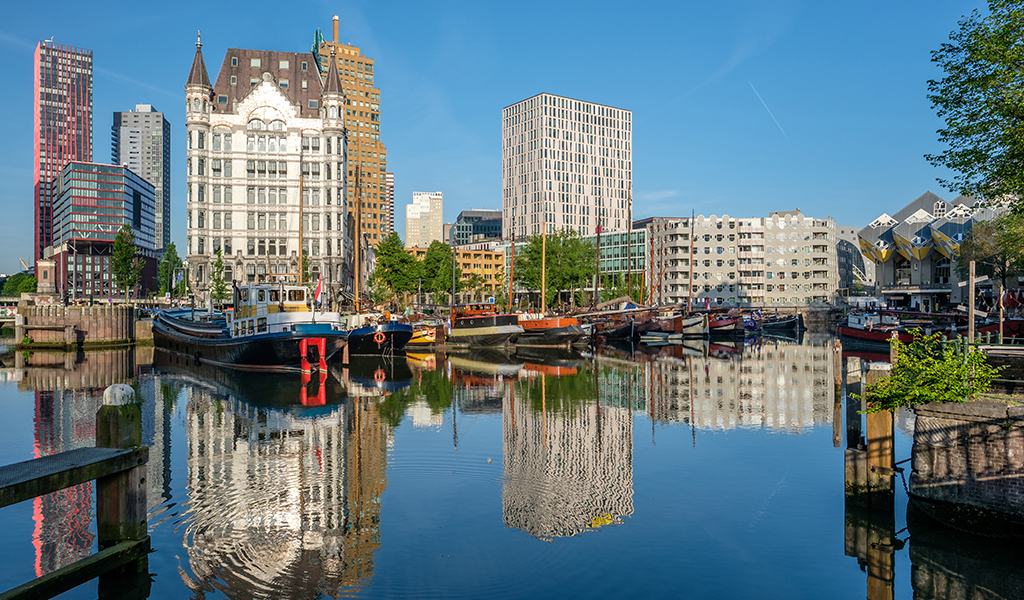
Intercity trains
If you’re traveling from one city to another, intercity trains are your best and quickest option, says Amsterdam Tips. In contrast to the Sprinter, Intercity trains are faster and make limited stops between major cities. Many of these trains offer free onboard wi-fi and have live travel information screens.
There are distinctions between double-deckers (VIRM – Verlengd InterRegio Materieel), single-deckers (ICM – Intercitymaterieel), and Intercity Direct. Amsterdam Tips has a comprehensive guide to trains.
Other options for public transit
There are so many options for public transit in The Netherlands that we can’t explain them all in detail here. In a nutshell, in addition to trains you can also catch a tram or take the bus. Amsterdam and Rotterdam have underground metros, while other cities offer over-ground metros (both of which get packed in peak hours). There’s also the popular ferry/boat service.
Another option: Rent a bicycle. The Netherlands is a cyclist’s dream as bike lanes are generally separated from car traffic. Learn more from DutchReview’s in-depth guide to public transport in The Netherlands.
Just don’t take a taxi or Uber, which are both expensive, says solo travel blogger The Brave Dame.
Tip: Whether you’re driving or on foot, pay attention to cyclists and when crossing bike paths. While on foot, make sure you’re not inadvertently walking on a bike path. These commonly run alongside sidewalks and are not always clearly marked. – Government of Canada
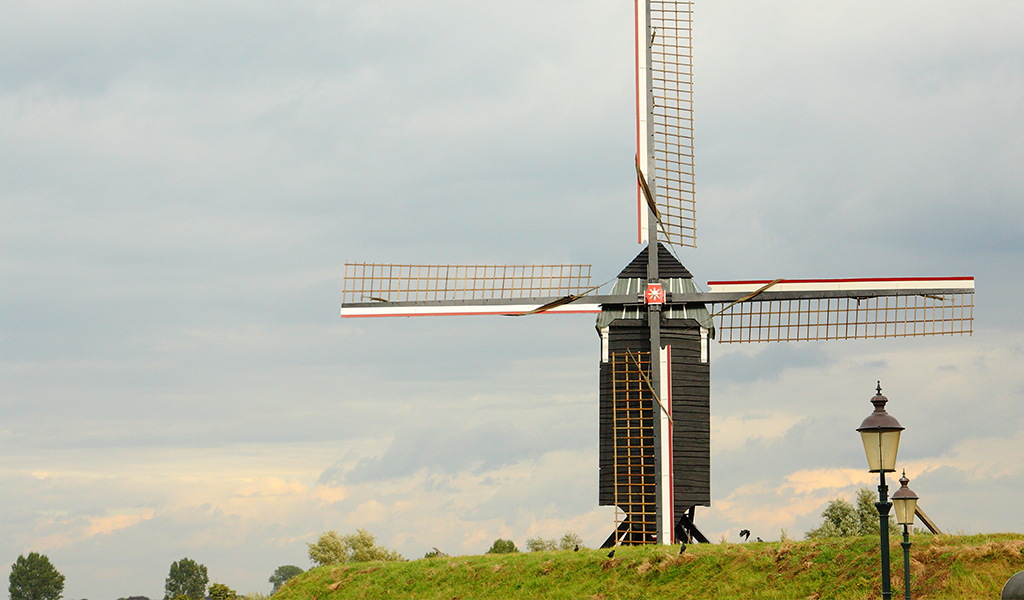
Check out street vendors, snack bars and food markets
A couple of the travel blogs we checked say to keep your expectations for Dutch food low, but that there are a few things worth munching on – you just have to know where to find them. The Brave Dame says to check street vendors or snack bars for patat (thick cut French fries), poffertjes (tiny, fluffy pancakes) or a delicious stroopwafel (syrup waffle).
Try a meal at any inexpensive chain restaurant, such as:
- Febo (fries and snacks)
- Wok to Walk (Noodles and other stir-fried stuff)
- Julia’s (Pasta)
You can also skip the chain restaurant route and visit Rotterdam’s food markets, as recommended by The Wanderlost Way. Markthal is a huge open marketplace with foods from all over the world.
There’s Gouda cheese, herring, Dutch apple pie (the quintessential Dutch dessert), and more delicious Dutch food to be found in Amsterdam.
Culture Trip has even more tasty delights you should keep an eye out for.
Tip: Offering criticism is more common than offering praise. Try not to take offense as the Dutch speak directly.
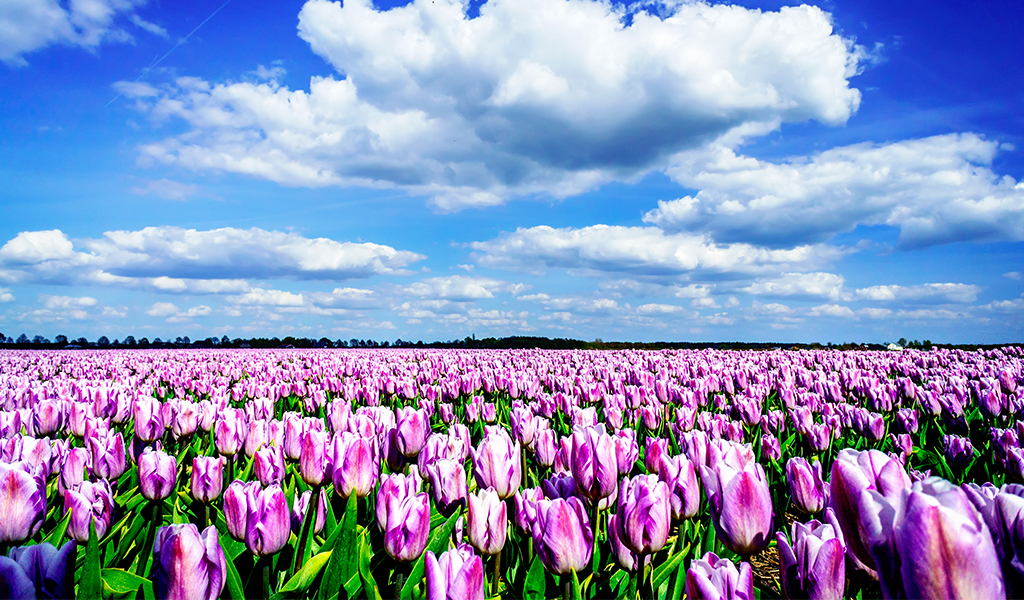
What to do
Stroll the tulip fields near Keukenhof
If you’re visiting between late March and early May (especially in April), you get a special treat – the opportunity to see iconic Dutch tulips in bloom! Although you can shell out €30 to see the fields at Keukenhof (the world’s largest flower park, travel blog WanderlustingK has some tips on how to explore them for free:
If you’re traveling with family or are on a budget, taking a train to Schiphol Airport then grabbing a one-way ticket to Keukenhof by bus (the 858, for €6 ) is the easiest route. Once you get off at Keukenhof, you’ll have about a 5 kilometre, half-hour walk to Hillegom to see the best fields.
Tip: The weather changes unpredictably, so bring a raincoat on your excursion. – WanderlustingK
See the sites in Amsterdam
Amsterdam is one of The Netherlands’ two capitals (the other is The Hague) and has everything you could want in a charming European city – breathtakingly beautiful canals, historical architecture filled with character, more museums than you could ever visit, vintage shops, and much more.
“Amsterdam has so many great places to visit,” says Helen. “I preferred the Rembrandt museum to the Van Gogh museum. Anne Frank’s house is so interesting but it books up well in advance. You can book a canal tour at night and have dinner on a boat,” she added, adding she found it easy to hop on a tram, and English was widely spoken. “I also loved the wax museum.”
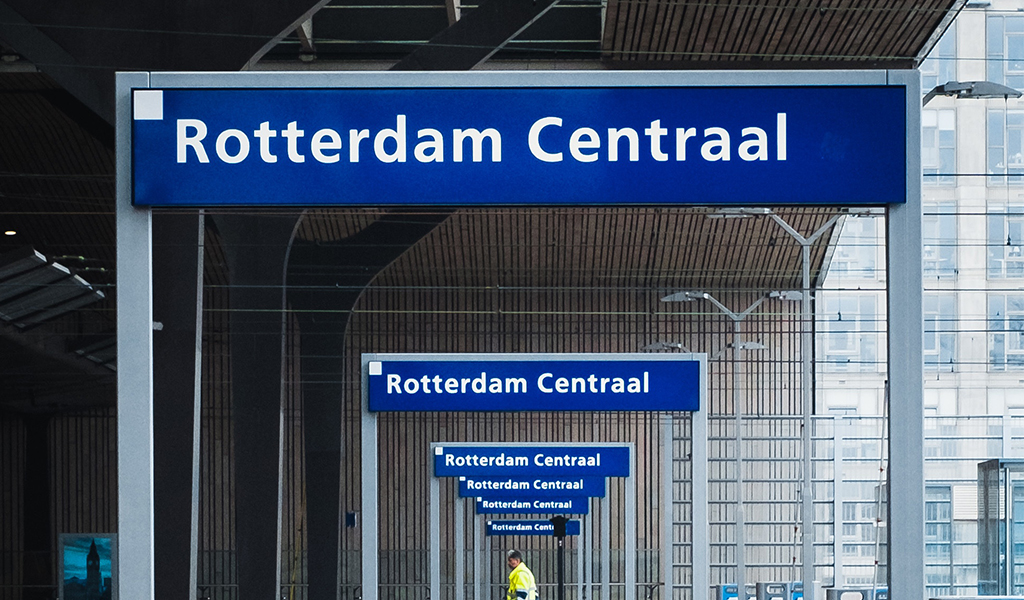
Explore museums
If you’ve got an interest or hobby, there’s probably a museum in Amsterdam dedicated to it. Whether you want to learn about chess, funerals, Heineken, houseboats or even the history of sex, there’s probably at least one of 75 to capture your attention, from the Rembrandt House Museum to Body Worlds , Amsterdam Heineken Experience and, of course, the sobering Anne Frank House , a hidden annex of an Amsterdam canal house where the iconic Jewish girl wrote her diary before being discovered and deported to a German concentration camp. This one is often sold out months in advance, but you can attend a two-hour guided tour of the South Amsterdam neighbourhood where she grew up.
Tip: Visit the tourist shops to get tickets in advance for all the tours and save time in lines for all museums. – Helen
Take a canal tour
If you have an evening free, why not take a stroll along the UNESCO-listed Canal Ring? This world heritage site is actually three canals that form a shape around the old city centre and is recommended by On the Luce as one of the best free things to do in the city, along with some lovely parks.
Visit the red light district for some taboo fun
Europeans are well-known for their liberal attitudes towards sex, and you’ll see that during your journey throughout Amsterdam, from its red light district (which is actually one of the safest parts of the city to its sex museums, such as Sex Museum – The temple of Venus and the Erotic Museum, an old warehouse in the middle of the red light district.

Take a day trip to Utrecht
Discover Domkerk’s cathedral in Utrecht
Just a half hour’s train ride from Amsterdam, Utrecht is a great day trip destination and one of the oldest cities in the country. Bonus: A lot of the attractions are free and the city is walkable.
The Domkerk is a mammoth church cathedral and a landmark at the heart of Utrecht. Its Gothic architecture serves as the backdrop to a beautiful courtyard. If you’re up for it, pay €9 to climb the 465 steps to the top of the tower.
If you’re a foodie, rejoice – there are tons of spots in Utrecht to have lunch or a snack , from cheap options to trendy cafes, suggests Olive Magazine.
Discover Rotterdam
Rotterdam is a famous port city that’s now a hub for modern architecture and the arts. There’s lots to see on a budget. Room Rotterdam recommends renting a bike for cheap or taking a guided walking tour to explore the waterfront, see amazing architecture and spot some of the best bars in town.
If you’d love to see some iconic Dutch windmills, head to the UNESCO village of Kinderkijk, where you can find 19 of them on the waterways.
You can explore The Netherlands on a modest budget and get almost anywhere you need to go on public transit – if you plan ahead, know where to look for deals and discounts, and stick to local haunts for deliciously cheap eats. You can even see unforgettable sites like the famous tulip fields, iconic windmills and charming canals on day trips to different cities.
Are you travelling to The Netherlands for the first time? Returning to a favourite destination? What are your best tips when it comes to saving for vacations? We’d love to hear what you’ve planned, or any trips we missed! Share your story in the comments and tell us what destinations are on your wish list. Our team love saving for holidays and we hope to inspire our members with exciting suggestions to spend your Caddle money.
Download Caddle
Download the Caddle AppWhy I choose St. Catharines for Caddle
Why I chose St. Catharines
Four years ago, I had just quit my full-time marketing job to establish and launch Caddle. While we could have chosen Toronto or any of the cities within Hamilton or the GTA, we’ve never wavered from knowing that St. Catharines, Niagara is home.
Making the choice was easy because we want to see St. Catharines thrive. For myself and many of our management team, our decision was personal; we have roots in Niagara and want to be part of its success as it becomes a major contender in Canada’s digital economy.
Here are a few reasons I continue to choose St. Catharines:
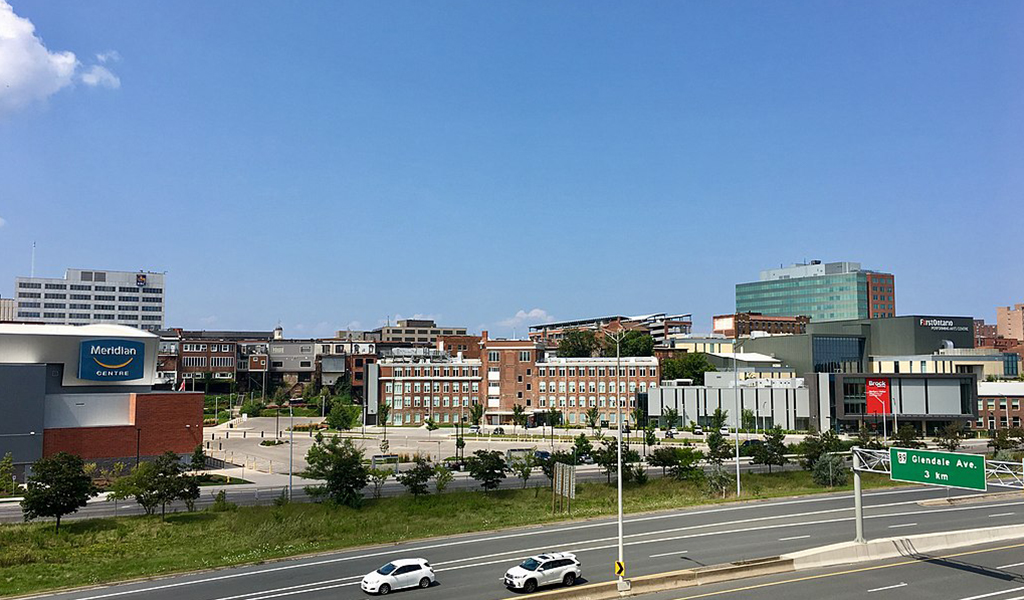
Source: Wikimedia
1. Access to high-quality talent and lower startup costs
Four years in, I’m still often shocked by what’s here. If we can’t find the talent we need right in St. Catharines, it’s in Grimsby or another of Niagara’s municipalities. We chose Niagara as our home for the region’s lower cost of living, beautiful natural wonders, high quality of life, and arguably easier access to talent. The cost to launch is lower here, too – a huge plus when you’re a founder of a small startup looking to establish a home base. If we’d located in Toronto, we would have at least quadrupled our burn rate with the increase in costs.
In contrast, Niagara offers the best of both worlds – a growing region, it’s just far enough (about an hour and a half) away from hectic mid-Toronto traffic but close enough that we can jump on the QEW and zip up to the big city when we need to. Plus we now have the daily GO train going right into Union!
While Toronto’s talent pool may be 50 times larger than Niagara’s, there are 100 times more companies in Canada’s largest city competing for top employees. In terms of high-quality talent per capita, I feel we’re in a better position here.
Caddle is thriving and continues to grow. In Toronto, we’d have been one of a million promising startups. In St. Catharines, we’re a big fish in a small pond. We attract highly talented web developers, marketers, Customer Experience and IT staff, and more.
2. Exceptional quality of life and sense of community
Our employees love the short, easy commute as well – Brian Cline, our Head of Technology, lives in Niagara Falls and commuted to Etobicoke for years. Now, he has about a 20-minute drive to work.
Most of our staff live within a 15 to 20-minute drive, which means they can spend more time with their families and less time facing the gridlock of GTA traffic every day. I walk to work in about seven minutes and often bring my dog, Maya, in with me. We find that our staff love the community they live and work in. They’re also invested in our long-term success and are passionate about helping to build a positive, dynamic company culture.
From the first day, I’ve always stressed the importance of family, flexibility, and work-life balance. Because our employees tend to stick around, they enjoy a lot of trust and flexibility within our team, which makes for a happy, productive work environment.
If you’ve got an important appointment to attend or a can’t-miss recital for your kid, you can take time off and do that here in Niagara (which is essential – happy families mean happy people!) We always say that no matter where you are in the region, for the most part everything you’ll need – schools, food and entertainment, shopping, outdoor spaces like parks and hiking trails, the gym – is within a 30-minute drive. This all contributes to high employee satisfaction, low turnover rate and great work-life balance.
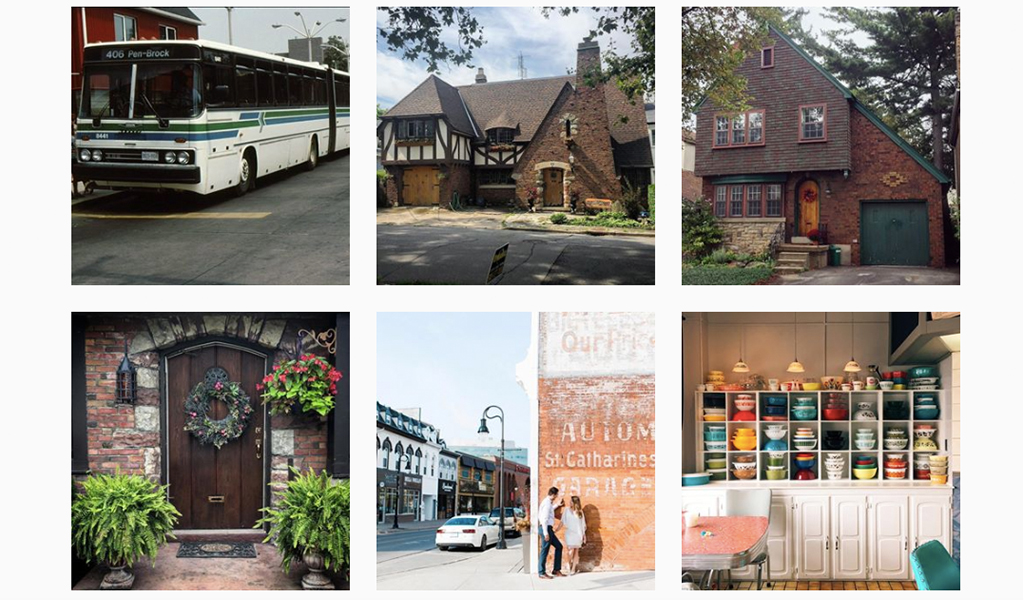
Source: Instagram
3. Government funding and support
While access to talent is a critical factor, so is funding and support. There are also unique opportunities for funding. For example, we’ve gained access to funds from federal and provincial levels of government looking to fund outside of the GTA.
As for local support, there’s Innovate Niagara, a business incubator and one-stop shop for the region’s entrepreneurs for intensive workshops, training and educational and networking events. The team there have been critical to our success, from walking us through incorporation to legal advice and hiring employees. They are one of many organizations, agencies, and companies playing a role in building our flourishing tech community.
When I knocked on their door, I had an idea, but I didn’t know how to turn it into an app. I didn’t know how to incorporate or where to find local talent. We’ve been with Innovate Niagara for more than two years, eventually joining their incubator at 1 St. Paul Street in downtown St. Catharines. We’re currently both located a few blocks from there, in the same building at 43 Church Street. Within our first three months, they’d connected me with legal resources, given me names of three local web developers, and introduced me to their executives in residence. They also provided access to mentorship, coaching, and funding for an early public relations campaign.

Source: Innovate Niagara
Wrapping up
Today, I love contributing my time to Niagara’s entrepreneurial community by speaking at events and participating on panels where I can promote Niagara.
Bonus: Doing this also helps me meet people working on amazing projects, and to develop as an entrepreneur. I’m still learning from our team, consumers, and the wider community every day, and don’t see that slowing down any time soon.
The future looks bright. We’re confident in the leadership at city hall and wholeheartedly believe in Mayor Walter Sendzik’s vision for the future. With the right programs, opportunities for incubation and the right incentives, St. Catharines (and Niagara as a whole) will be at the forefront of innovation. I look forward to the day when Caddle is just another of the many digital pioneers who saw Niagara’s potential in its early stages.
Why I started Caddle
Why I started Caddle
For seven years, I worked in Marketing and Sales at SC Johnson and we had one simple but critical pain point: we didn’t understand our consumers as well as we needed to.
In the digital age, brand loyalty is low, the competition fierce and ad-blocking technology is booming . The CPG (Consumer Packaged Goods) industry is cutthroat. We were constantly struggling to keep up with a fickle customer base and win the race to get the next best innovation on the shelves.
In this environment, you need fresh and fast market insights to ensure your brand survives in today’s CPG landscape, but we had no way of getting those with shrinking budgets and archaic, bloated insights providers. Sourcing intelligence from multinational market research firms or focus groups wasn’t an option. Because it took time to gather, compile and publish the data in traditional market research reports, it was often dated and fragmented. Focus groups are expensive and time-consuming to organize and manage. We needed insights within days of spotting an opportunity, not months. By the time we got those insights, the opportunity had passed.

A Better Way
I knew there had to be a better way, and that there was a need for businesses to have recent, up-to-the-minute data on their potential and current customers at an affordable price. My first thought was to build a mobile app that would reward consumers for their engagement with cash back on the products they’re interested in.
Consumers would answer surveys to identify brands they wanted to connect with. In return, brands would get to engage directly with consumers.
‘Imagine having hundreds of thousands of consumers at our fingertips,’ I thought to myself. ‘Instead of using dated or US research, we could have direct access to our consumer to get the insights that would drive our brands.’
At SC Johnson, this would have cost me five (maybe even six) figures and months to get the research.
I spent the next two years thinking about my idea. Eventually, my wife (my girlfriend at the time) gave me a clear ultimatum: “You need to do it or you need to shut up.”
The Deadline
That was enough motivation for me. I gave myself a deadline of May 1, 2015 to make it happen or move on. Two weeks prior to my deadline, I watched an inspiring documentary about (the late) Steve Jobs and Steve Wozniak, the founders of Apple. Watching that film about two pioneers who grew what would become a multi-billion dollar company out of their garage was exciting and inspiring. I thought, ‘I want to do this, but I need a sign.’
A few days before my deadline, I attended a training seminar in Chicago for SC Johnson (my employer at the time). During my flight back from Chicago to Buffalo, I discovered, The Woz was on my flight! I instantly recognized him from the documentary. But one thing was missing: there was no Apple watch on his wrist.
As we checked our bags through security, I seized a window of opportunity and tapped Mr. Wozniak on the shoulder to tell him my story. In reply, he said, “I don’t need to understand it. The fact is, you have the passion to do it. It’s not whether it fails or not. It’s going to be that you’re glad you did it and failed rather than the regret of not doing it at all.”
This was the ‘sign’ I’d been waiting for! Steve’s encouragement during that impromptu chat inspired me to sell some investment properties and hire Symetric, a local web and graphic design agency, to build the Caddle app.

From there, things took off. I quit my job at SC Johnson and launched Caddle in 2015. We attracted customers such as PepsiCo, Mars, and General Mills.
Dragons’ Den
An appearance on the popular CBC series Dragons’ Den resulted in four out of five dragons making a $125,000 investment in the company for 28 percent equity in the business (off-screen, we rejected the deal, and instead raised capital on more favourable terms with friends and family). Mick Higgins, our chief marketing officer, describes us as “ad blocking kryptonite.”
People listened to and believed in our pitch, and the market conditions continue to validate it. Thanks to our partners and the consumers who continue to support us, we engage everyone from millennial moms to tech evangelists, sports enthusiasts, and more – much faster than any old school focus group.
We launched and continue to grow our team in St. Catharines. Today, we have a team of 20 employees and a massive user base enabling brands to get the insights they need faster than any other platform.
Savings Goals: Team member Shauna
Saving for Travel
Combining travel to a warm, sunny destination with spending quality time with family and experiencing your culture can make for an unforgettable winter getaway.
That’s what Shauna Gayle-Robinson, our administrative assistant at Caddle, is doing this year as she packs for a visit to Jamaica in a few weeks.
<blockquote"I am currently saving and looking forward to my 2019 vacation in Jamaica. I am anxious and excited as this will be my first time visiting in years. The best part about my vacation is that it will be spent with my entire family. I'm looking forward to experiencing different aspects of my culture such as dance, food and the arts," she said.

Visiting Jamaica
Jamaica is a truly vibrant place where tranquil beaches, stunningly beautiful waterfalls, mouthwatering food and an eclectic culture all await. While it can be an expensive destination to visit, you can easily save some of your hard-earned Caddle cash with these budgeting tips:
Treat yourself to lunch and casual meals at local restaurants and dine on dishes like fish (a staple in the Jamaican diet), jerk chicken or pork, sweet potato and more. Expect to spend about $4.50 US for your average meal. Better yet, pick up your food at local supermarkets and cook your meals, says Nomadic Matt in his Jamaican travel guide..
For a taste of Jamaica’s famously rich culture, visit Kingston, the island’s capital (and largest) city. Travel blog A World to Travel says its blend of urban society with exotic jungle life means you’ll have fantastic opportunities to explore what the area offers, from the blue mountains to the busy natural harbour. And one of the best parts is that this trip is budget-friendly; there are many restaurants and guesthouses that won’t break the bank.

More Savings Stories
We love using the Caddle app as a team and telling the story of what we are saving for.
Read more about other’s stories.
Saving Goals: Caddle team member Ajay
Sports fans know what it’s like to spend months anticipating the opening game of the season, and often dream of what it would be like to see a match live. If you’re dreaming of snagging stellar seats this year in your favourite stadium, Ajay Khanna, our Account Manager at Caddle, has some insights for you:
“At first, when I began working at Caddle, but as time passed, I realized the amount I could save within a given timeframe to myself and decided on Toronto Raptors Tickets for this season,”

“I plan to cash out very soon, but first I must decide what game & when (perhaps during my birthday in March). It could be a free birthday gift from me to me.”
When he’s looking to save with Caddle, he looks for the larger offers and those that offer the best cash back first:
“I love sharing but do take advantage of the larger offers on Caddle such as Slim Jim. I find the offers that show the best cashback value or purchase those items on my daily shopping list, such as toilet paper.”

Tip: Join your favourite team’s fan club so you’ll be one of the first to hear about ticket offers, advises U.S. News & World Report. “Sometimes membership has a nominal fee attached, but that fee can pay off if you attend several games in a season.”
You can also shop the secondary market on websites like StubHub.com, TicketCity.com or eBay, where ticket agents or season ticket holders unable to attend a game often resell their tickets.
Read about Ryan’s savings goals.
Read about Jaime’s savings goals.
